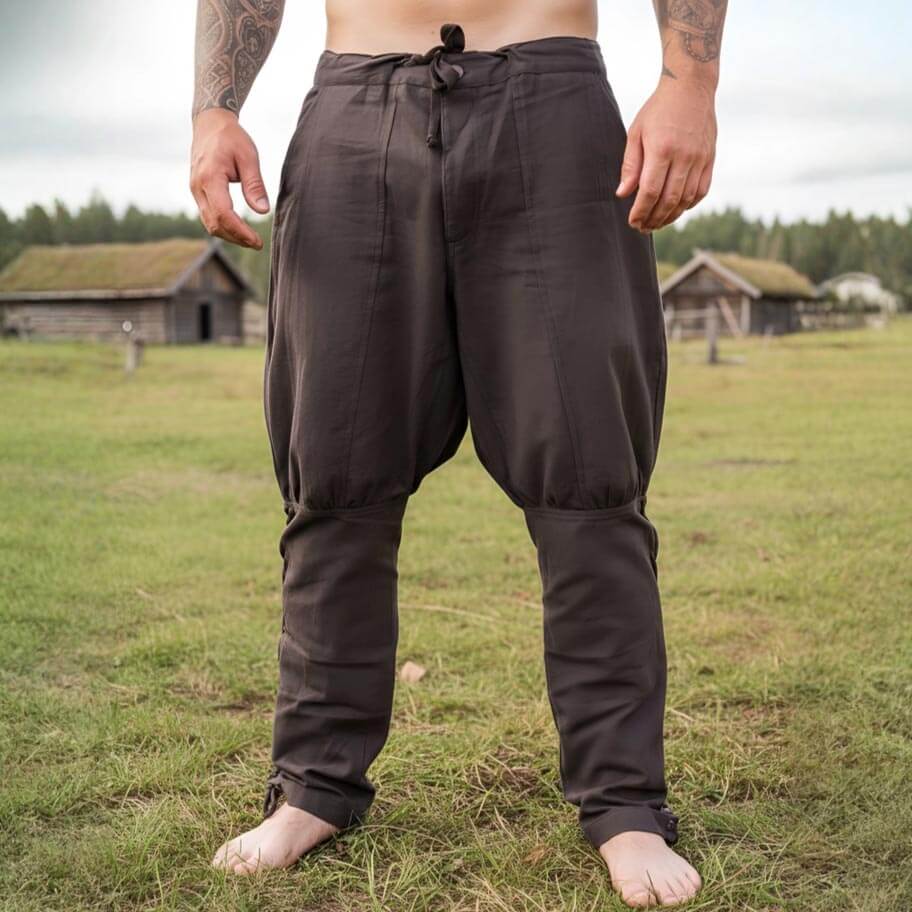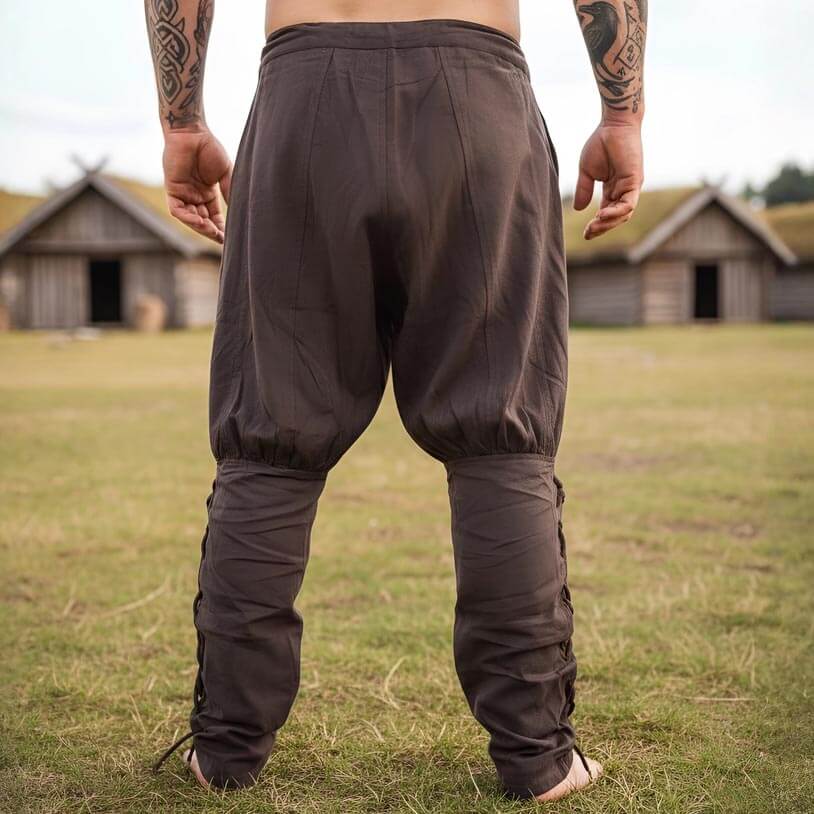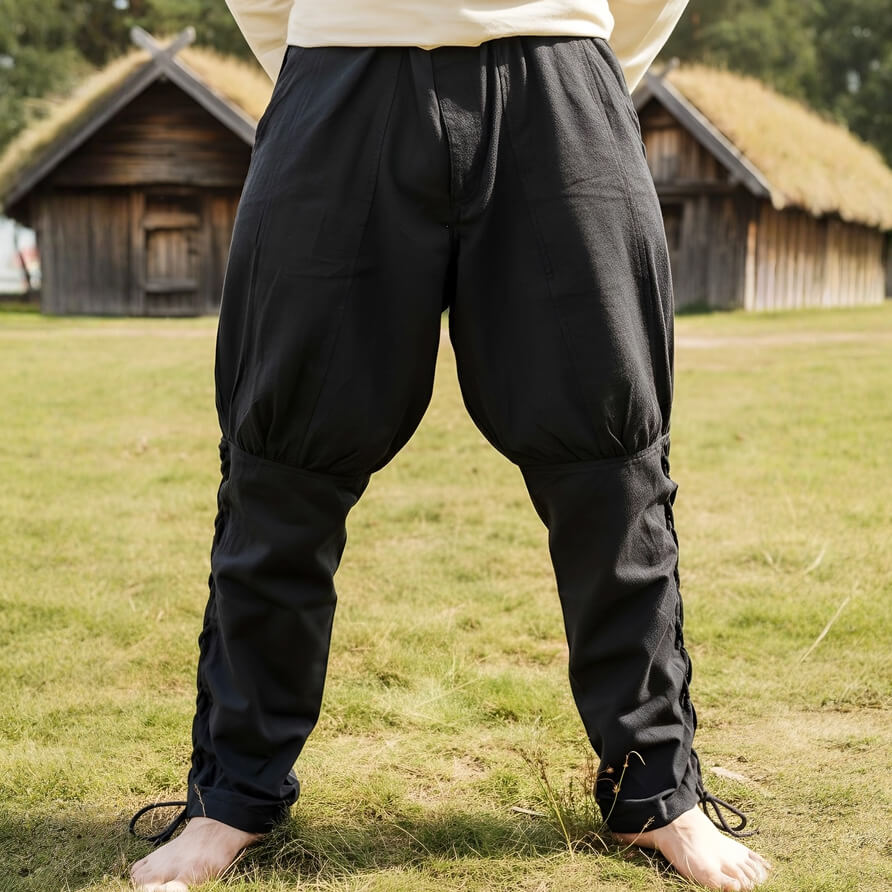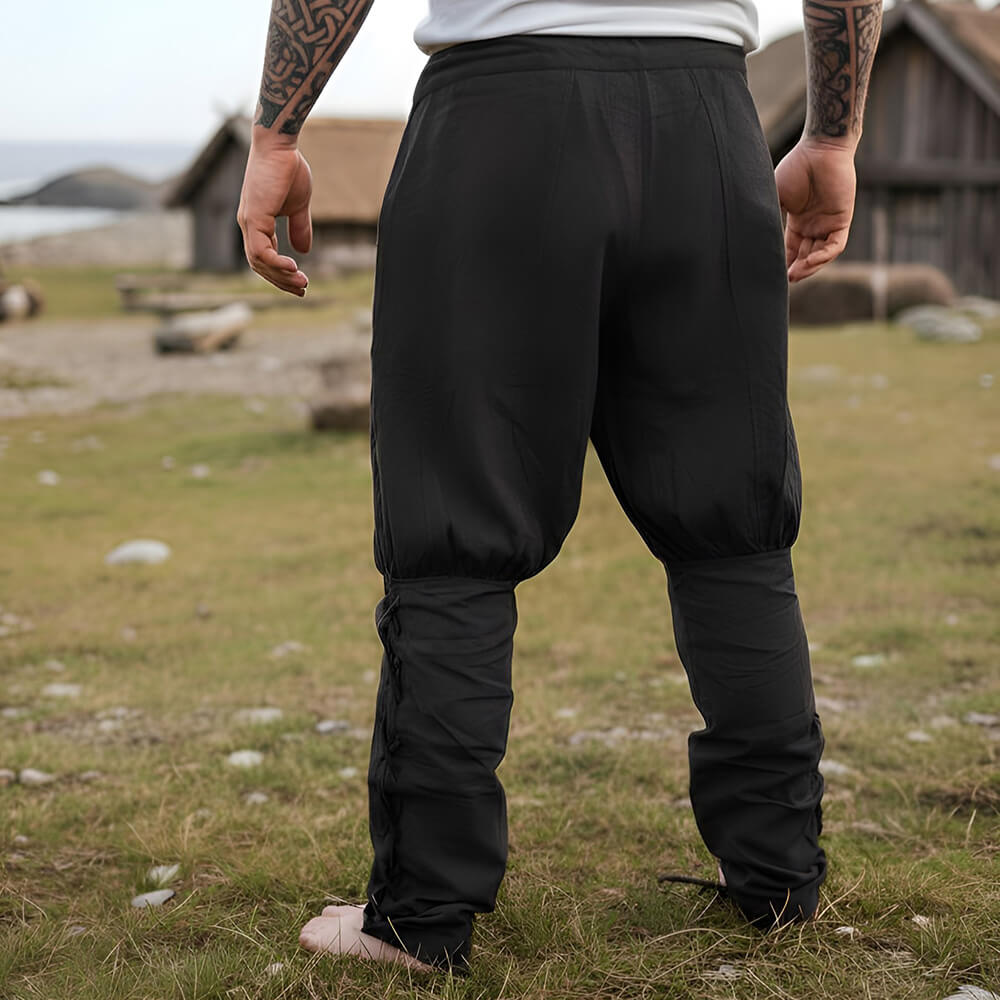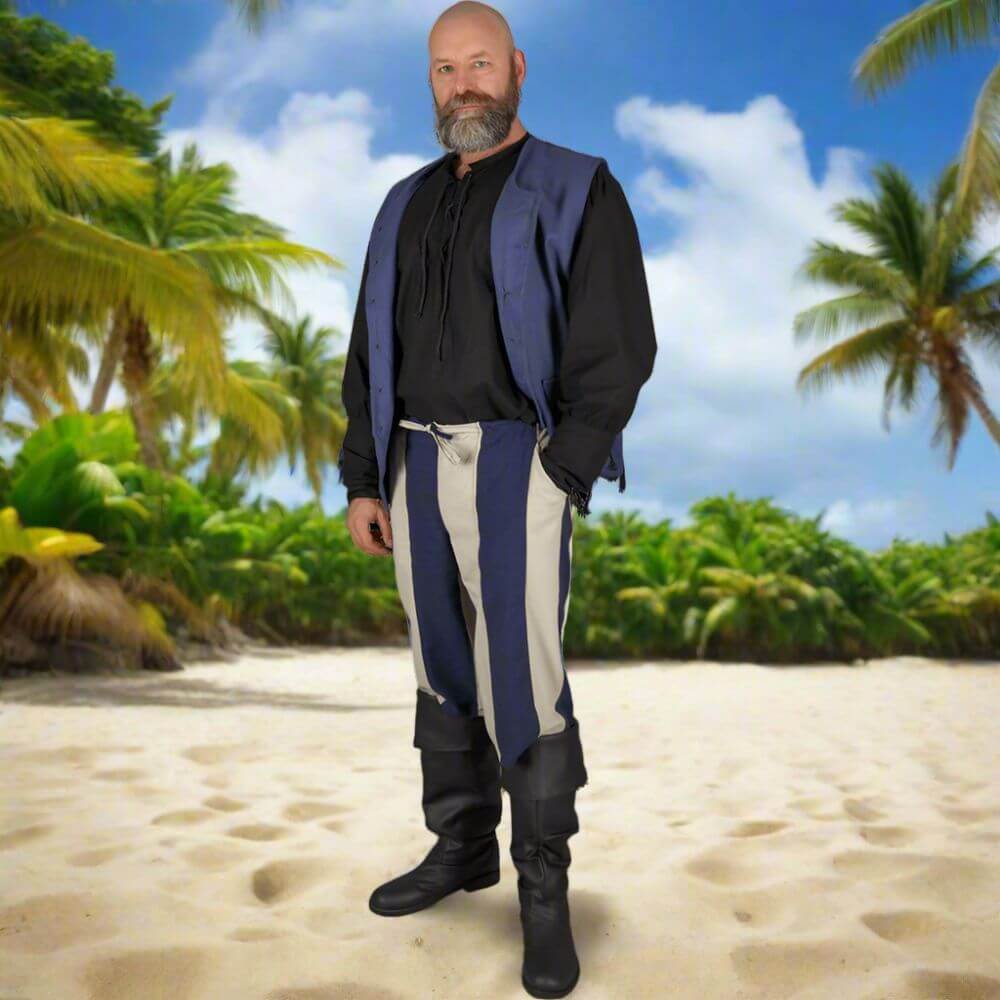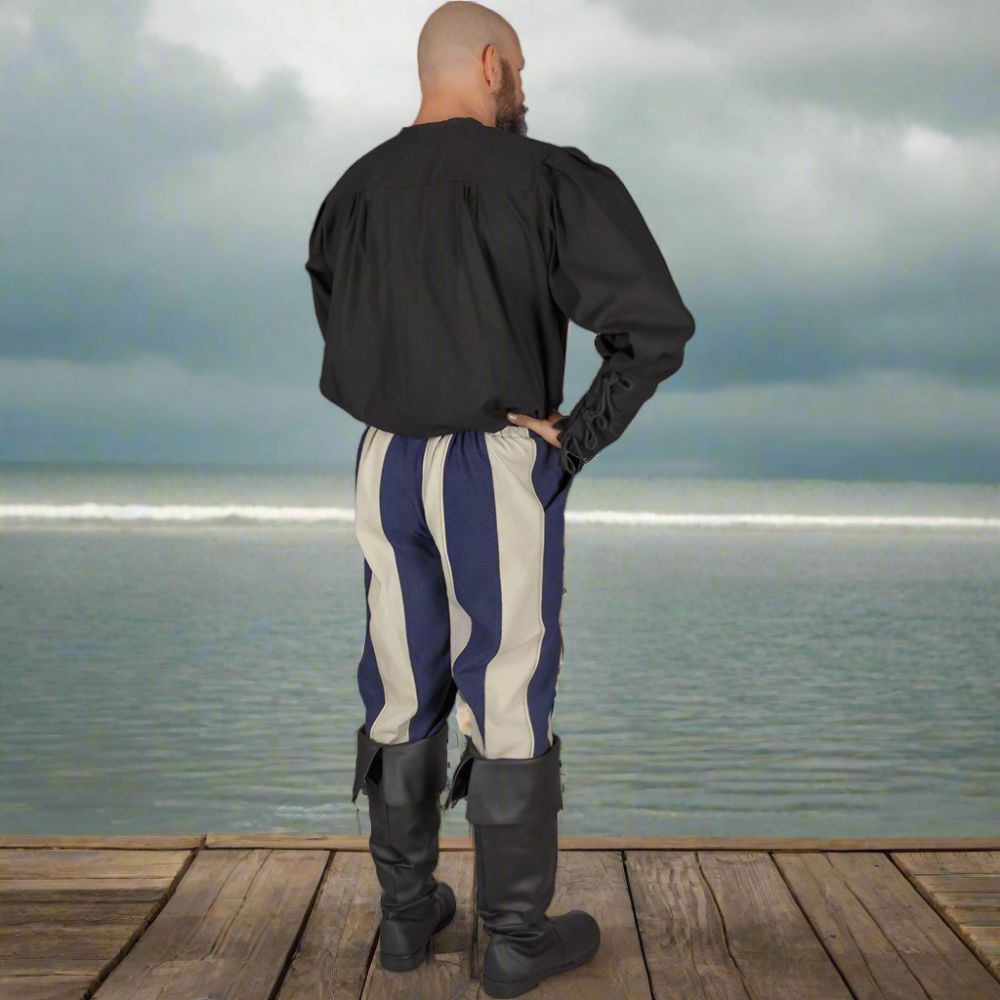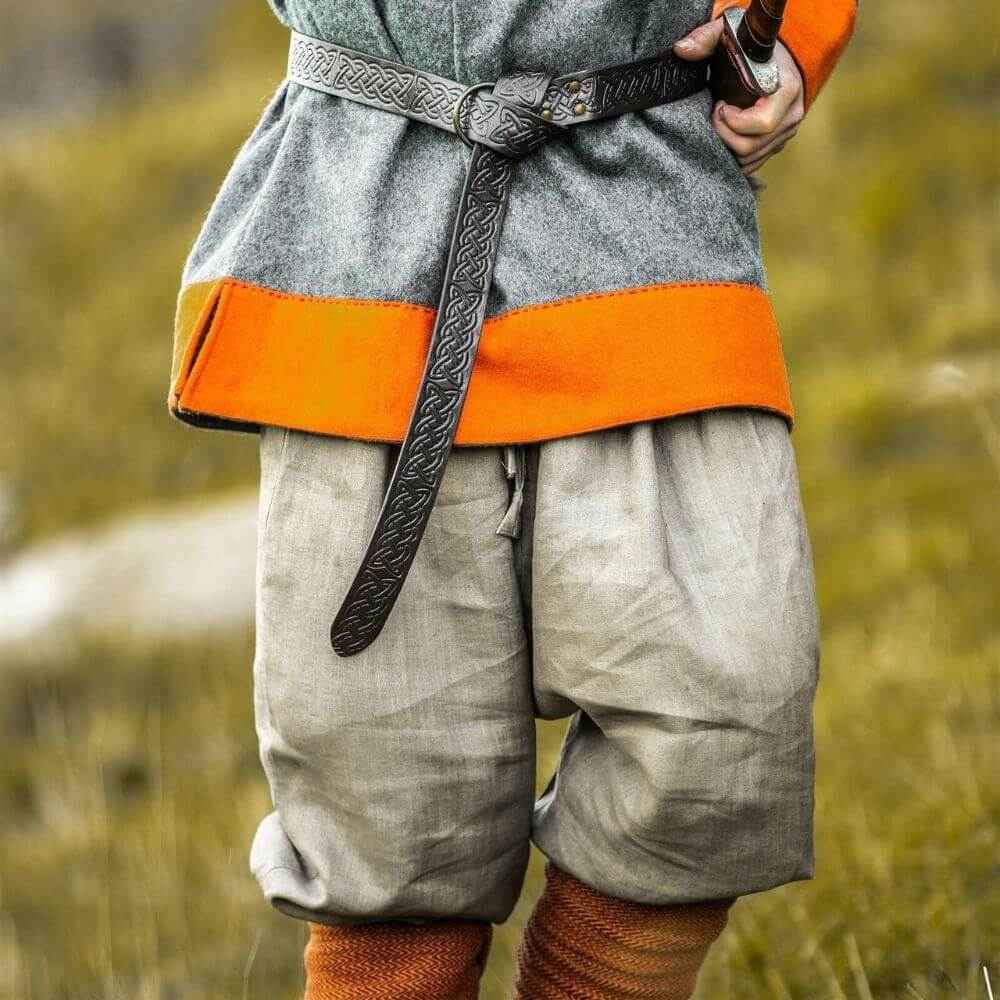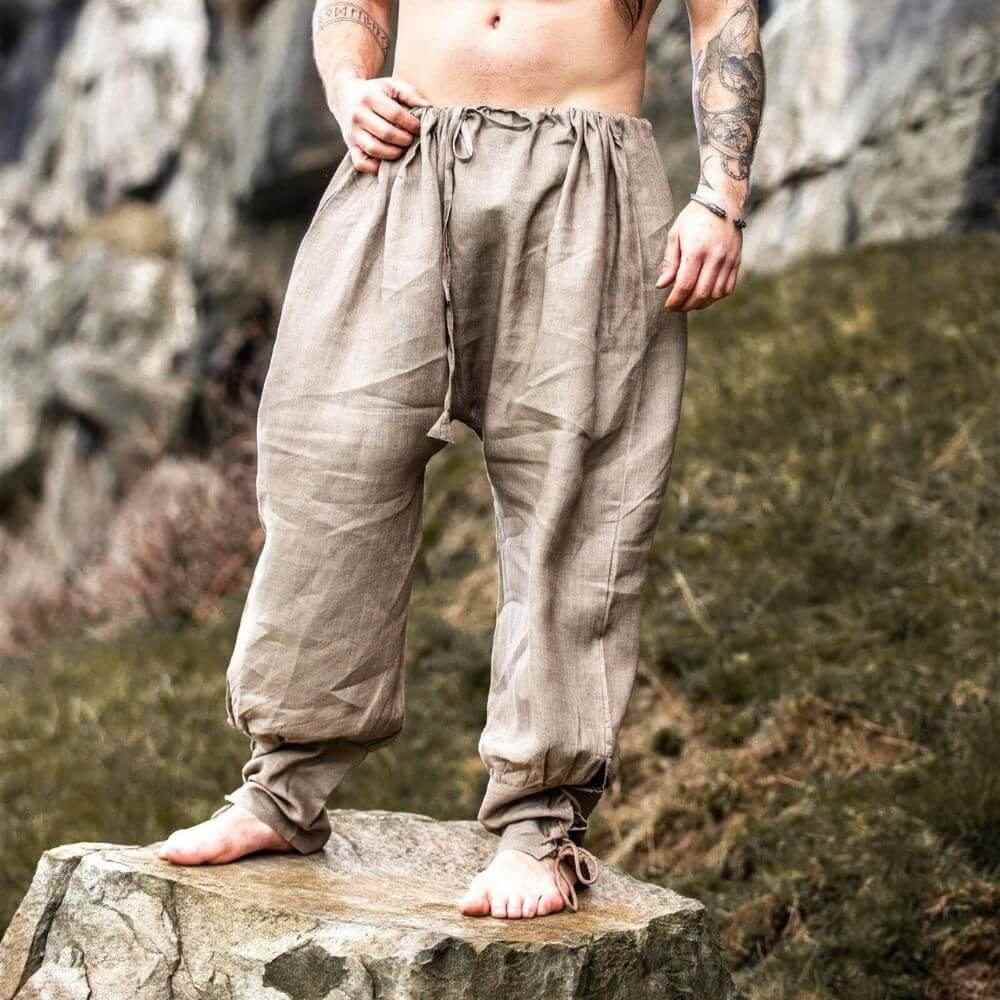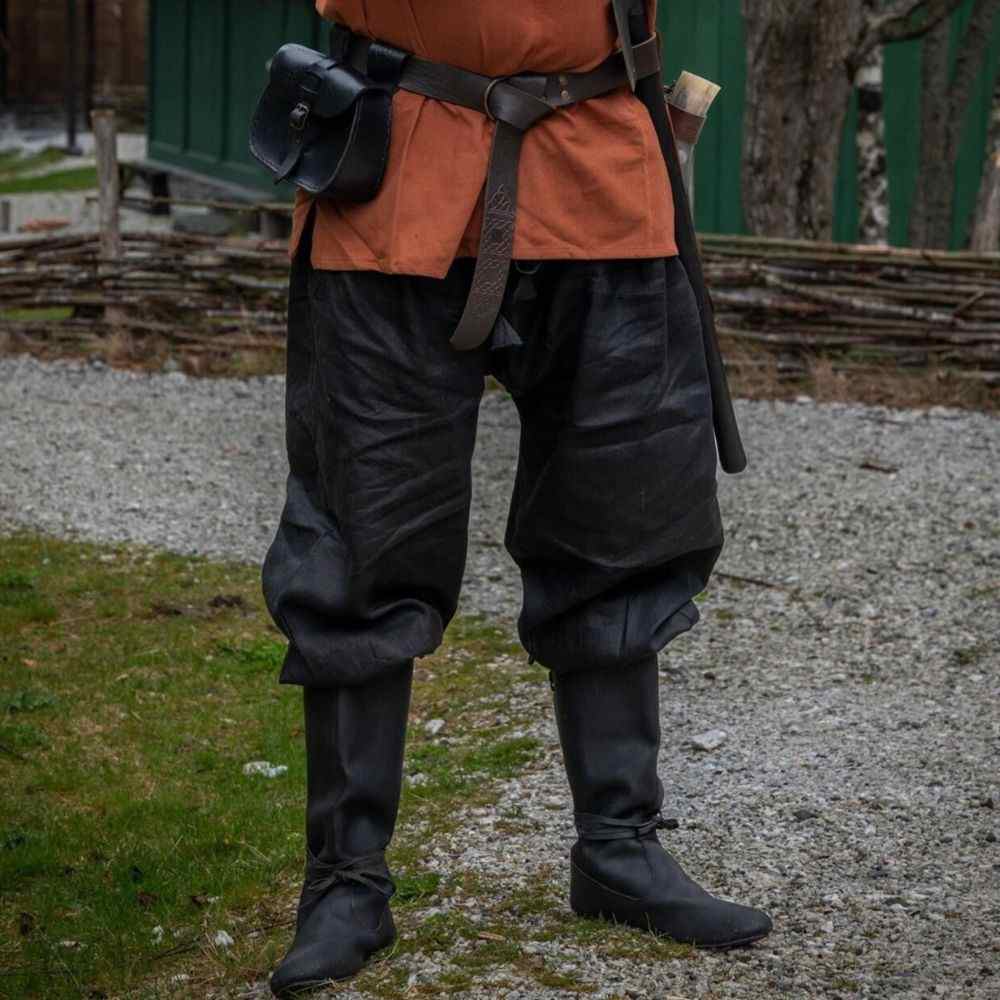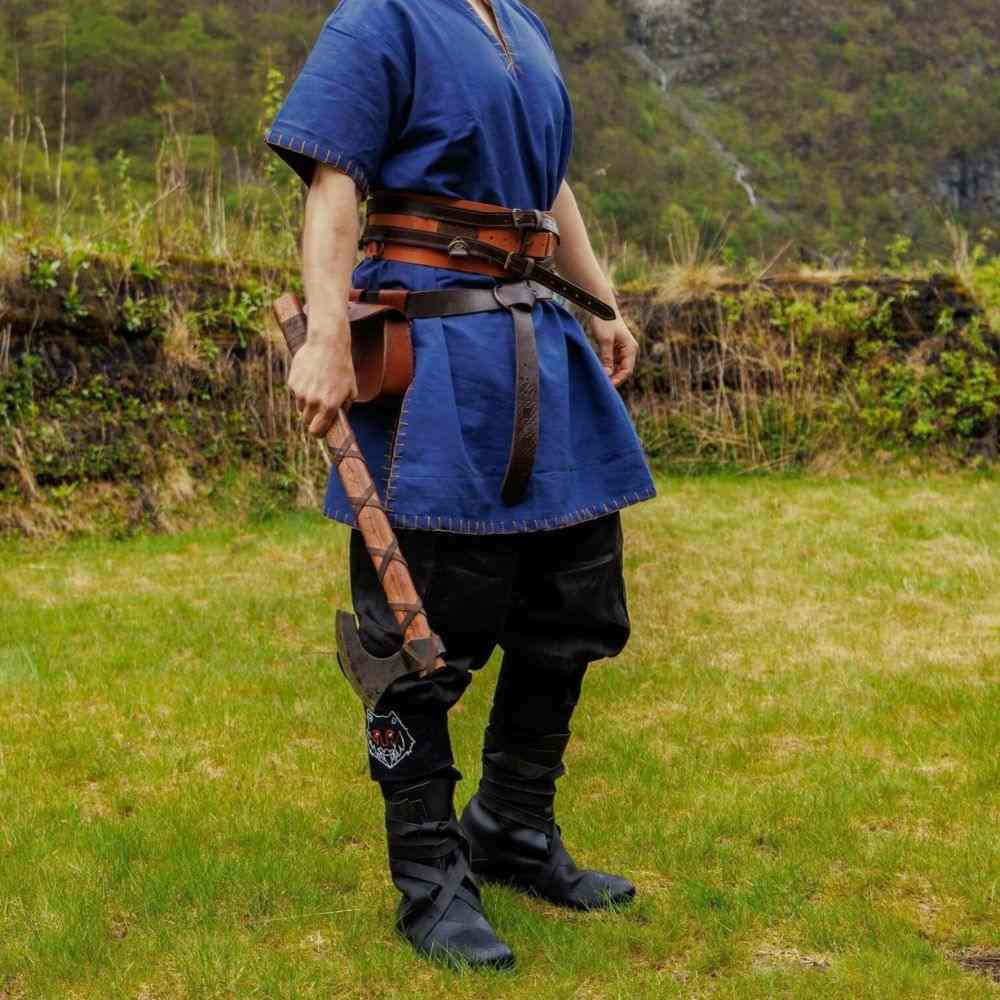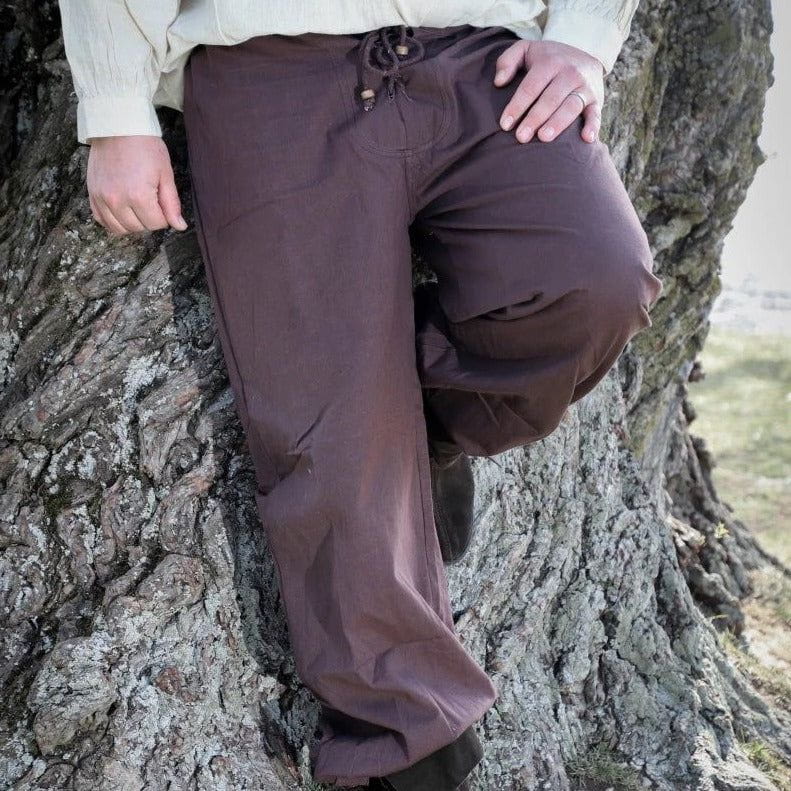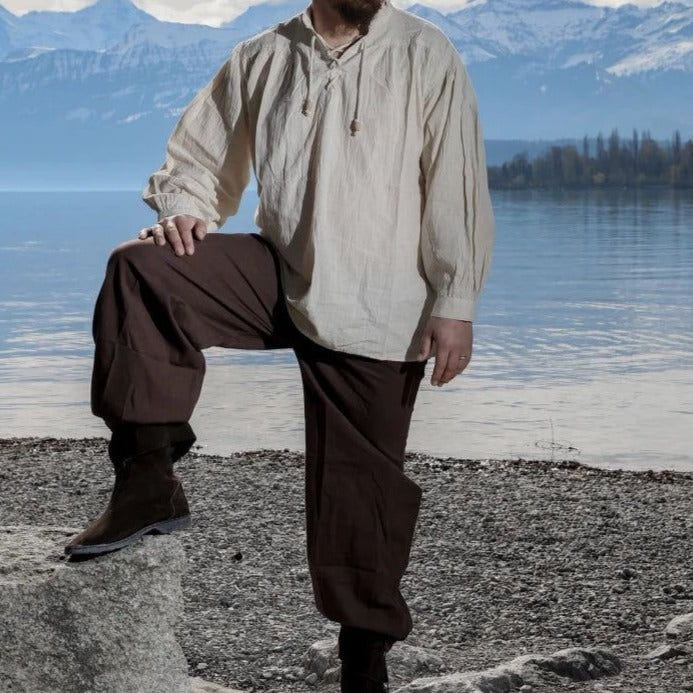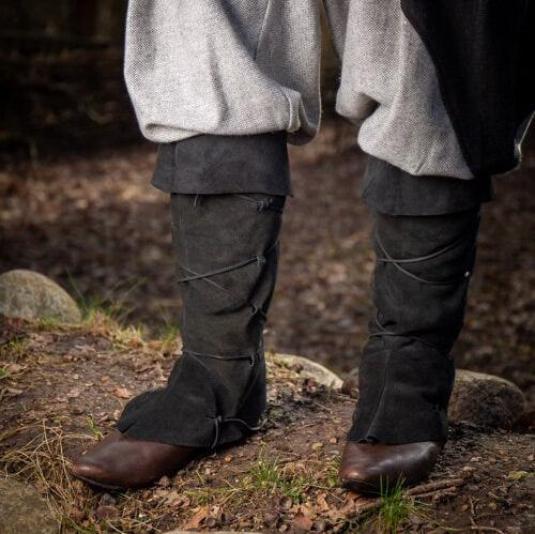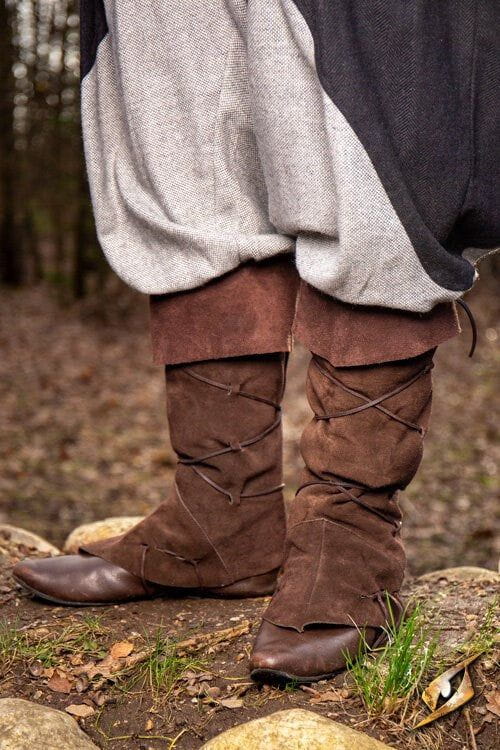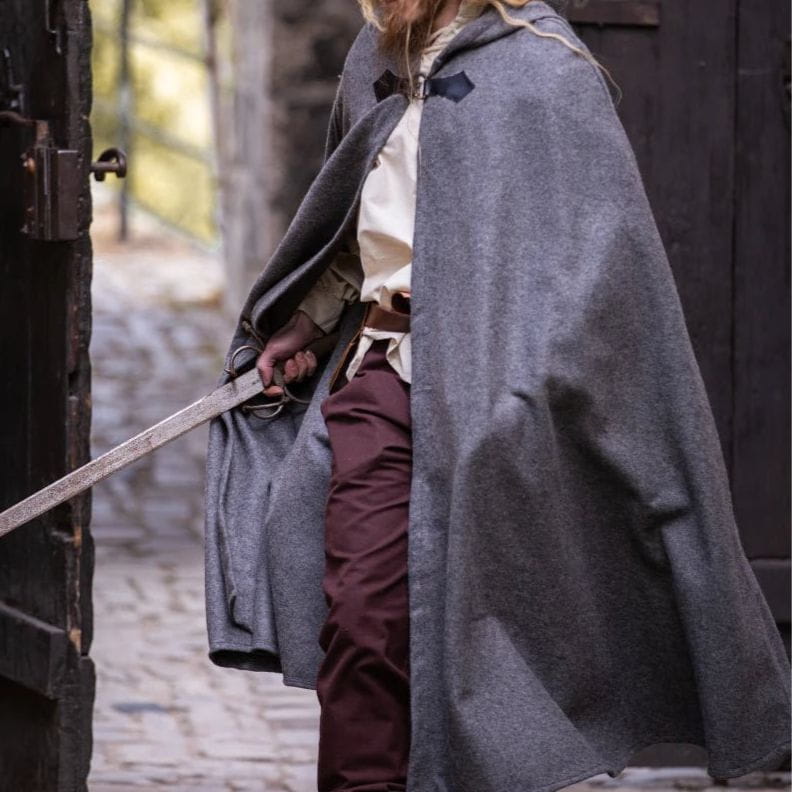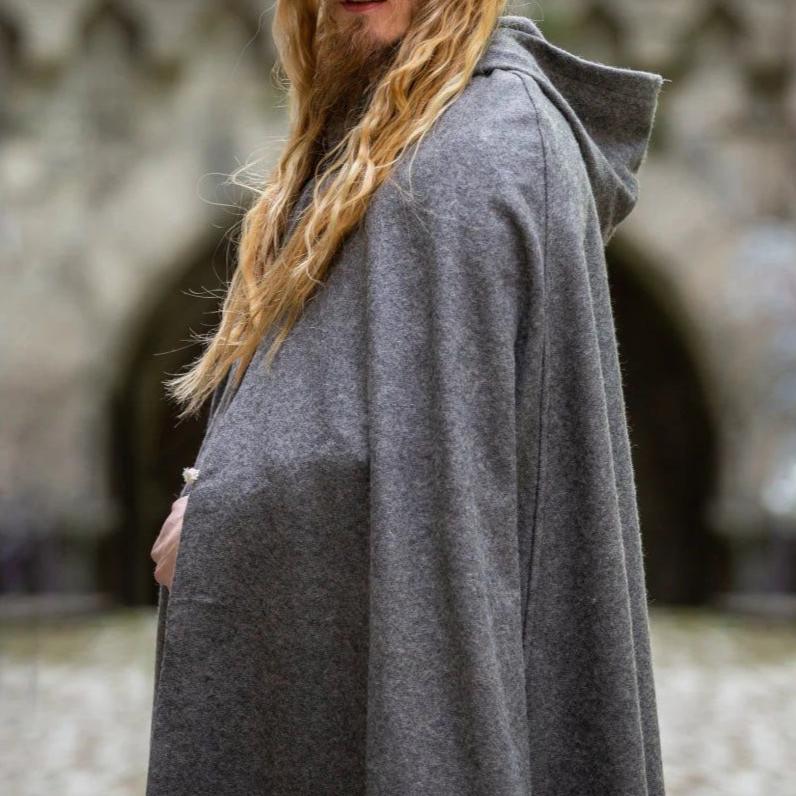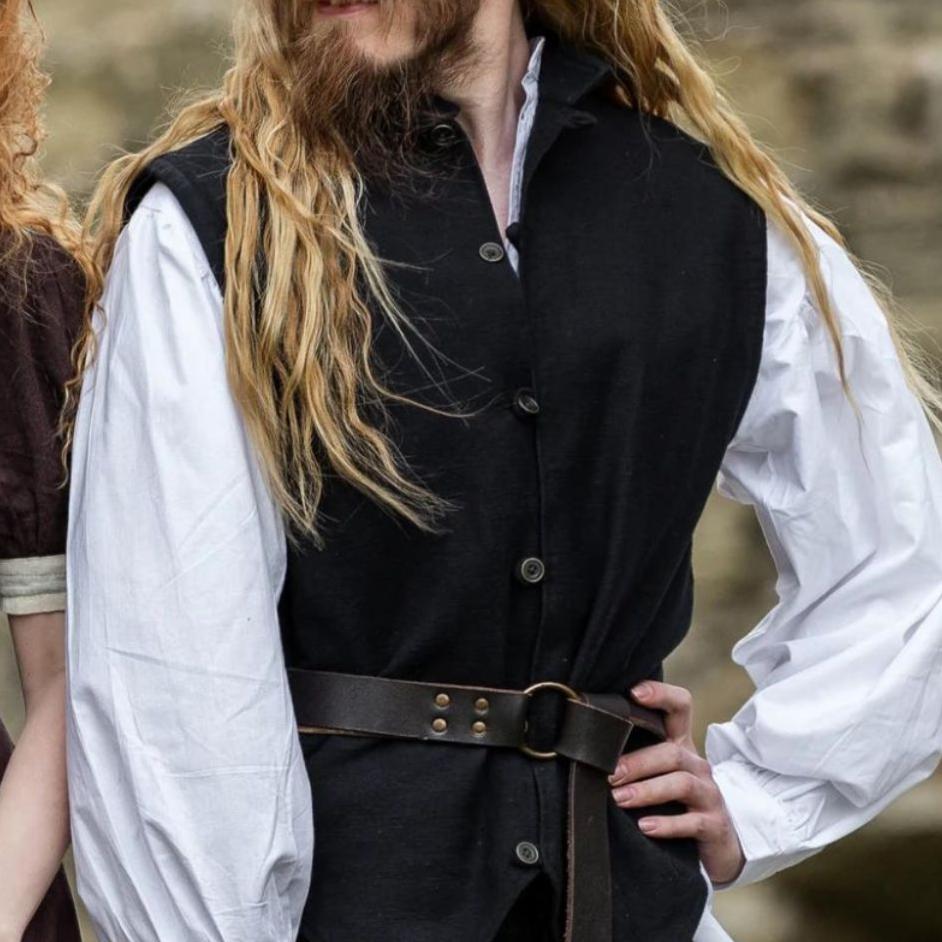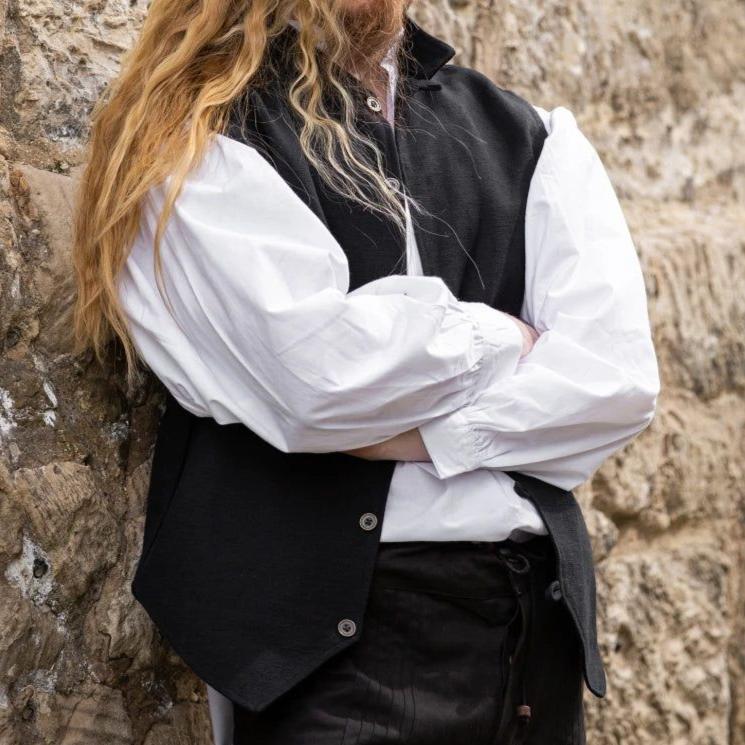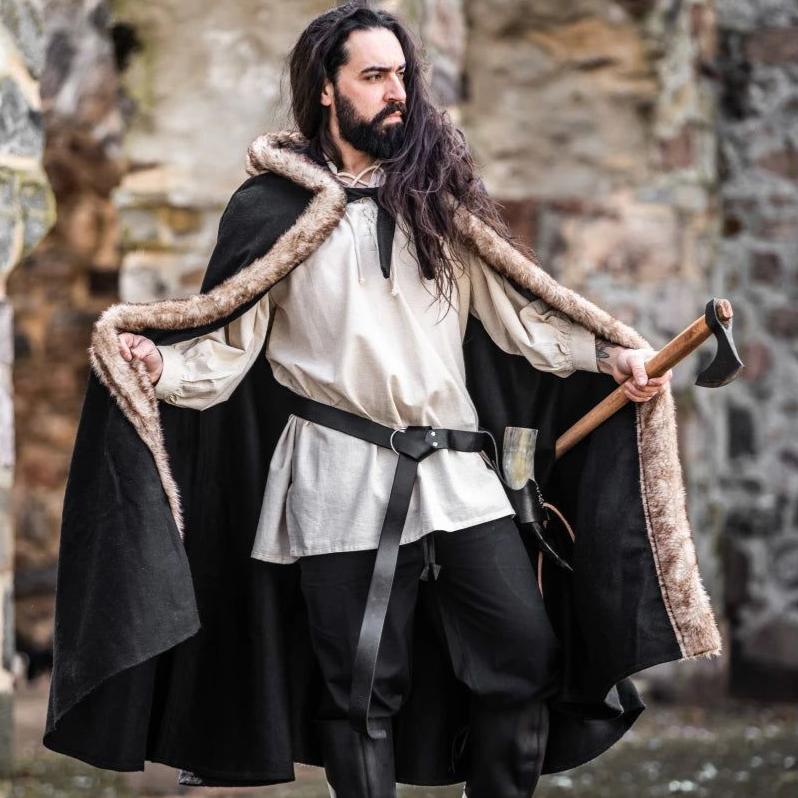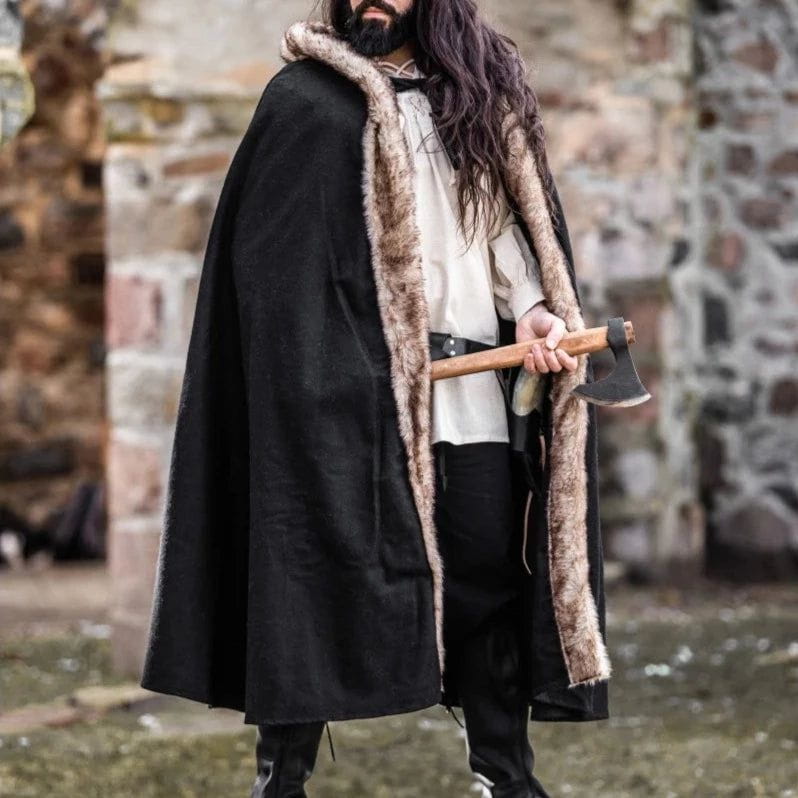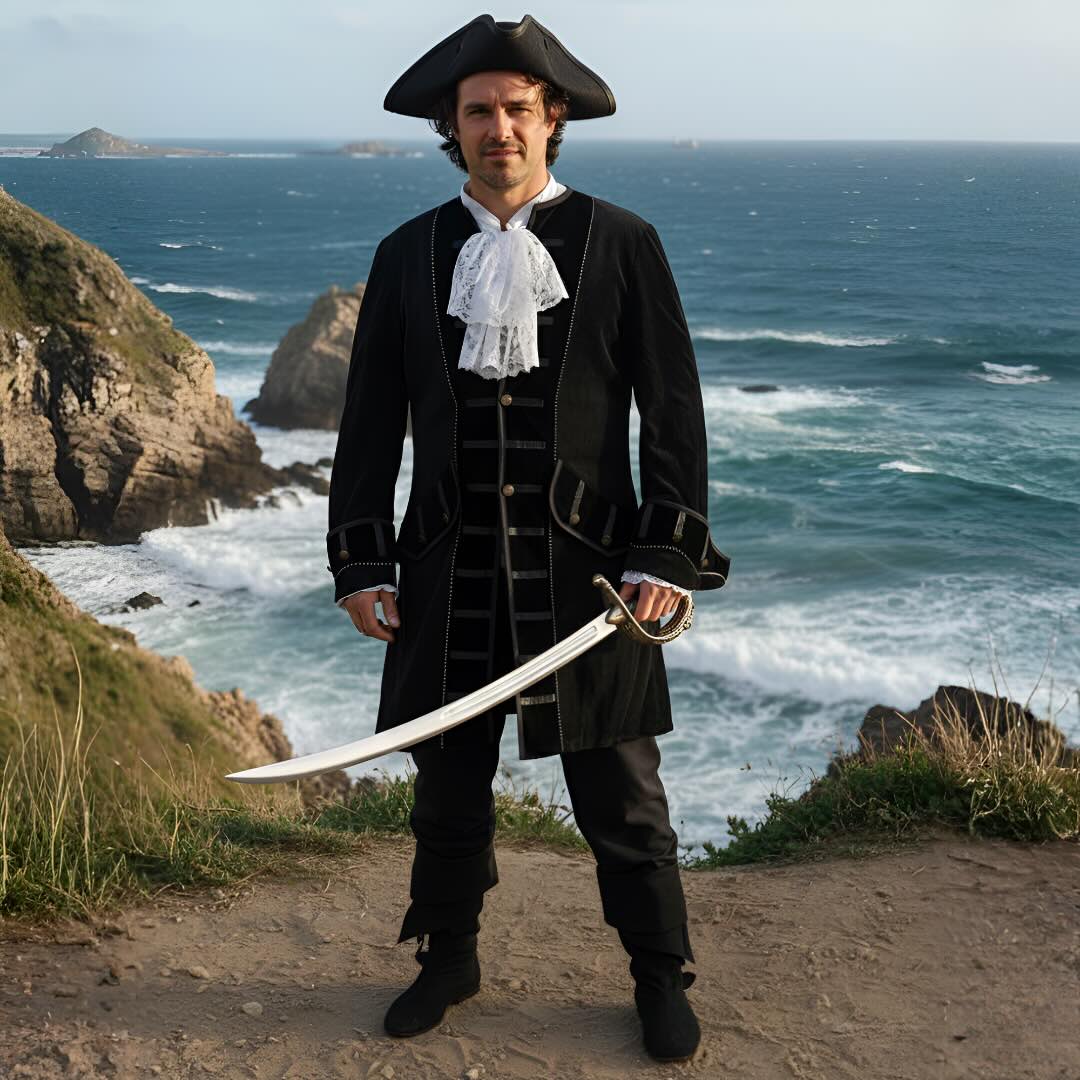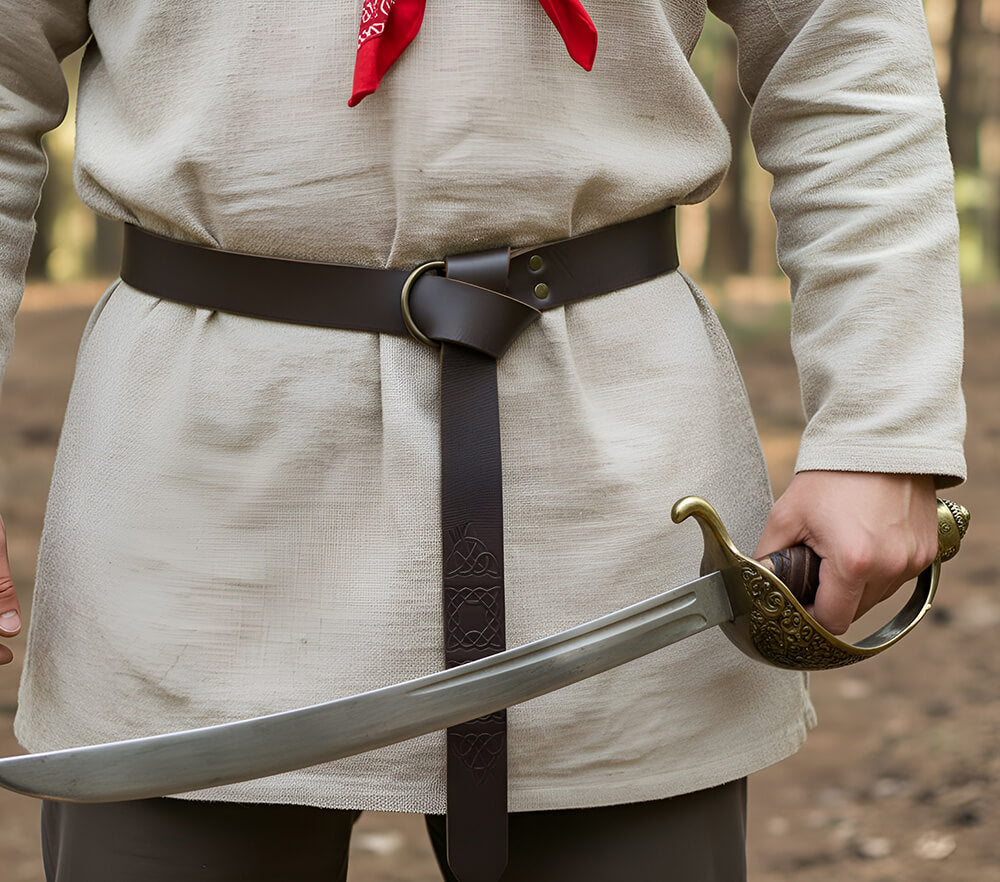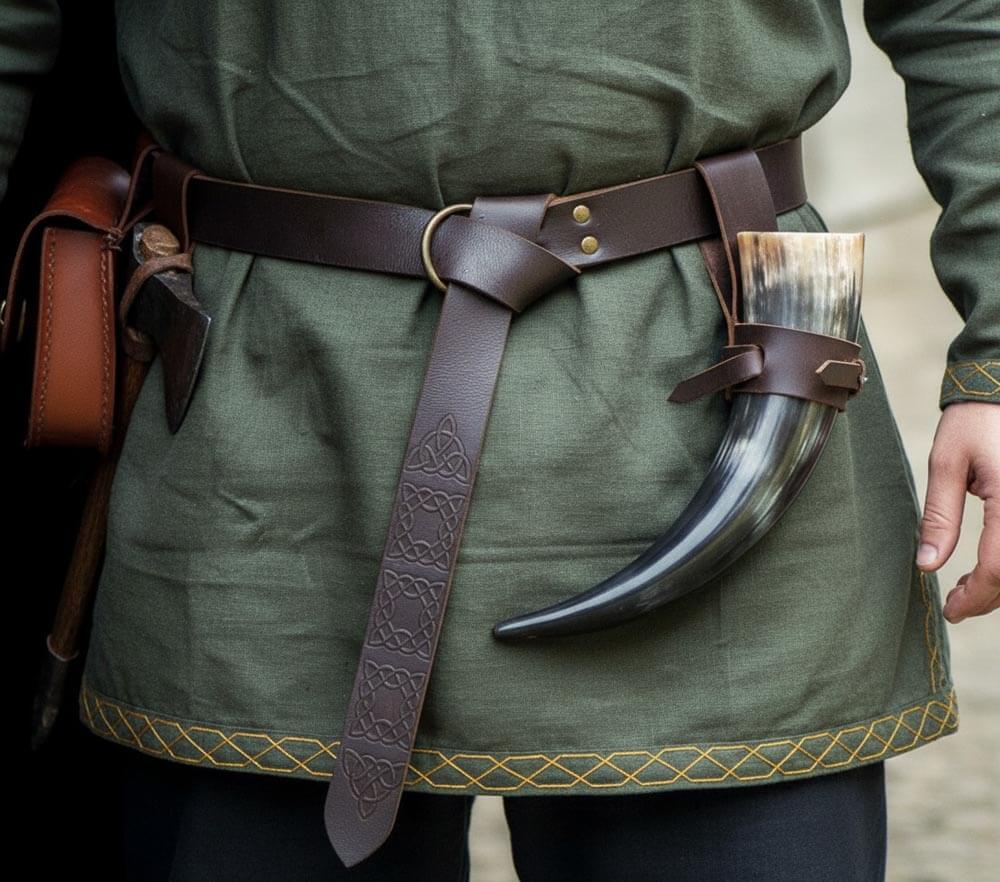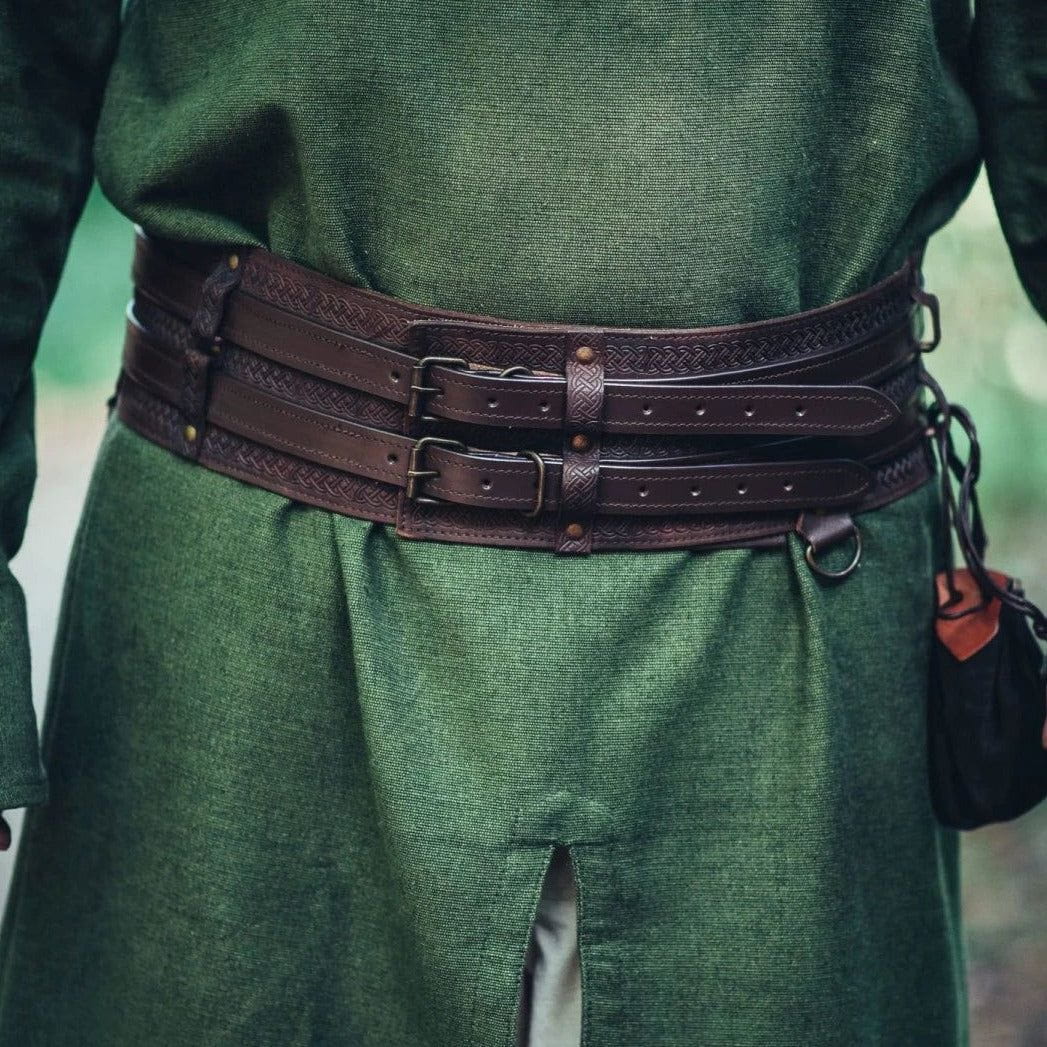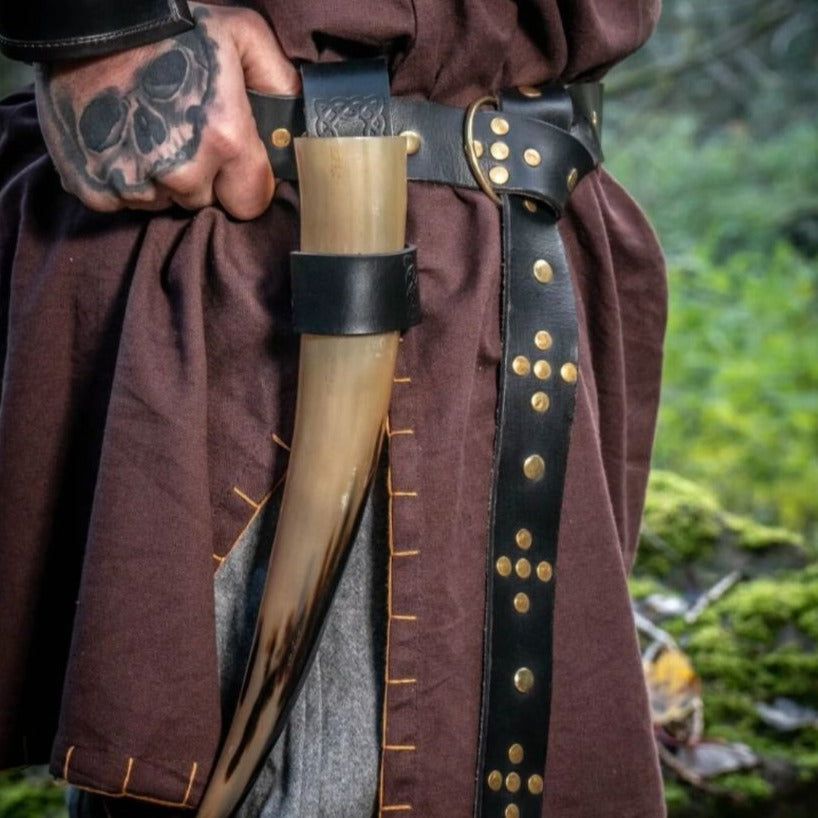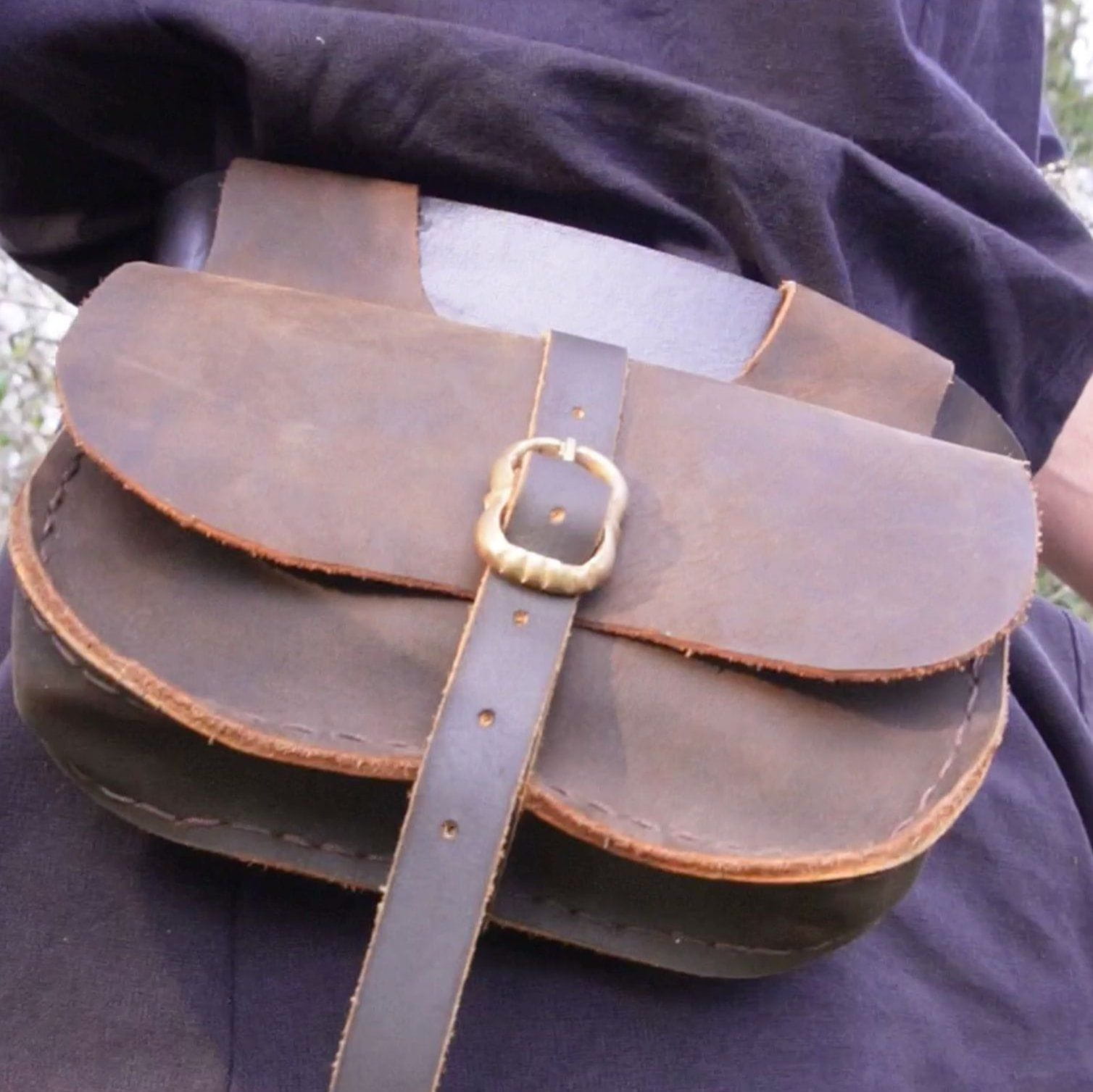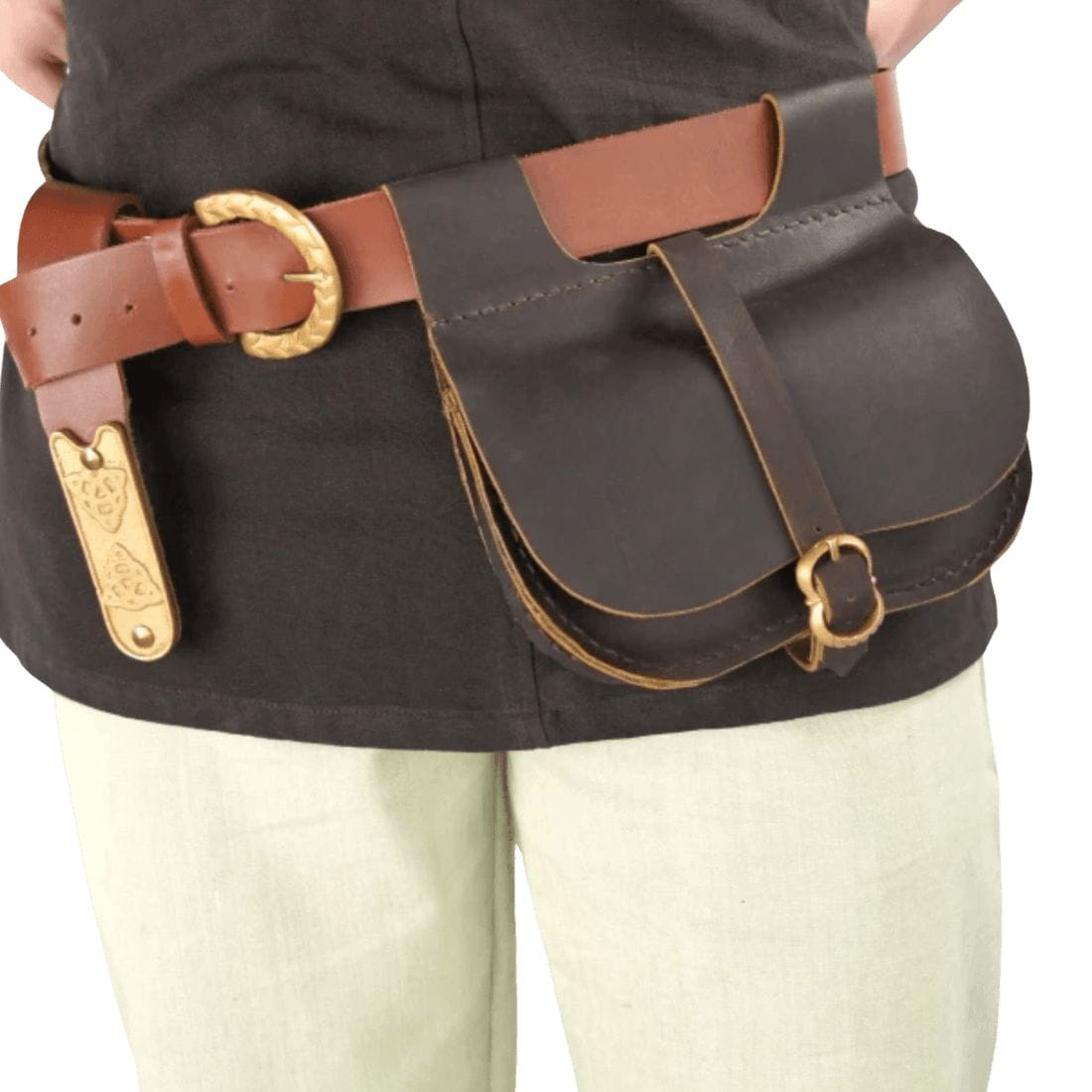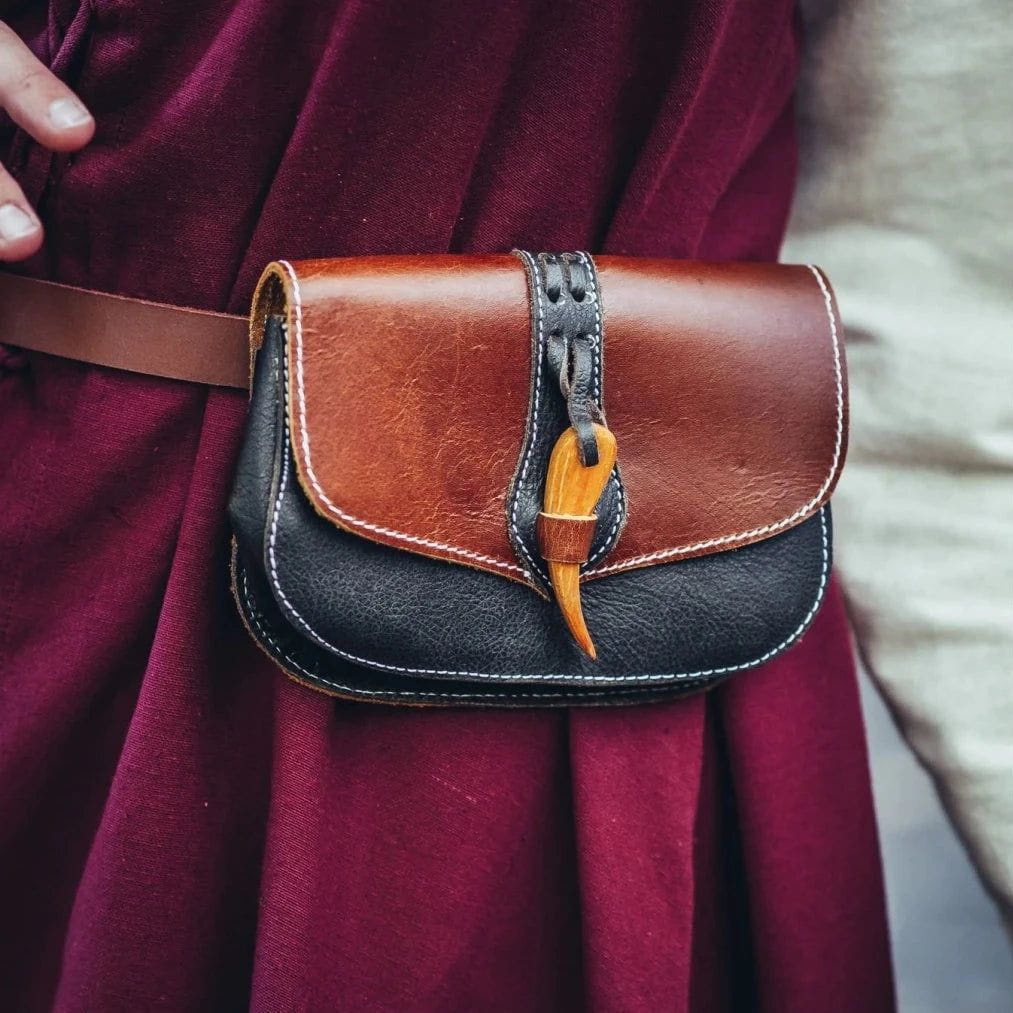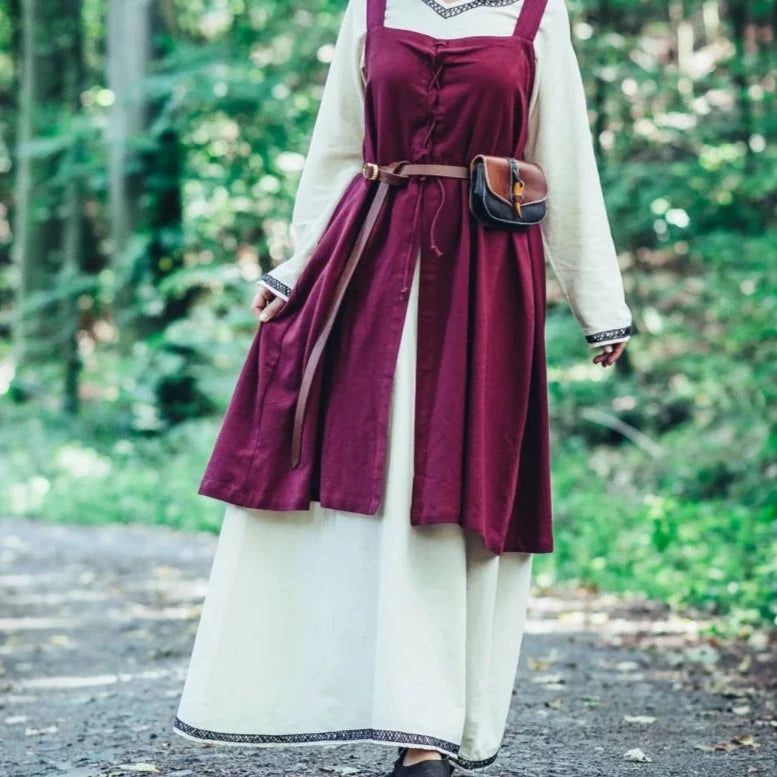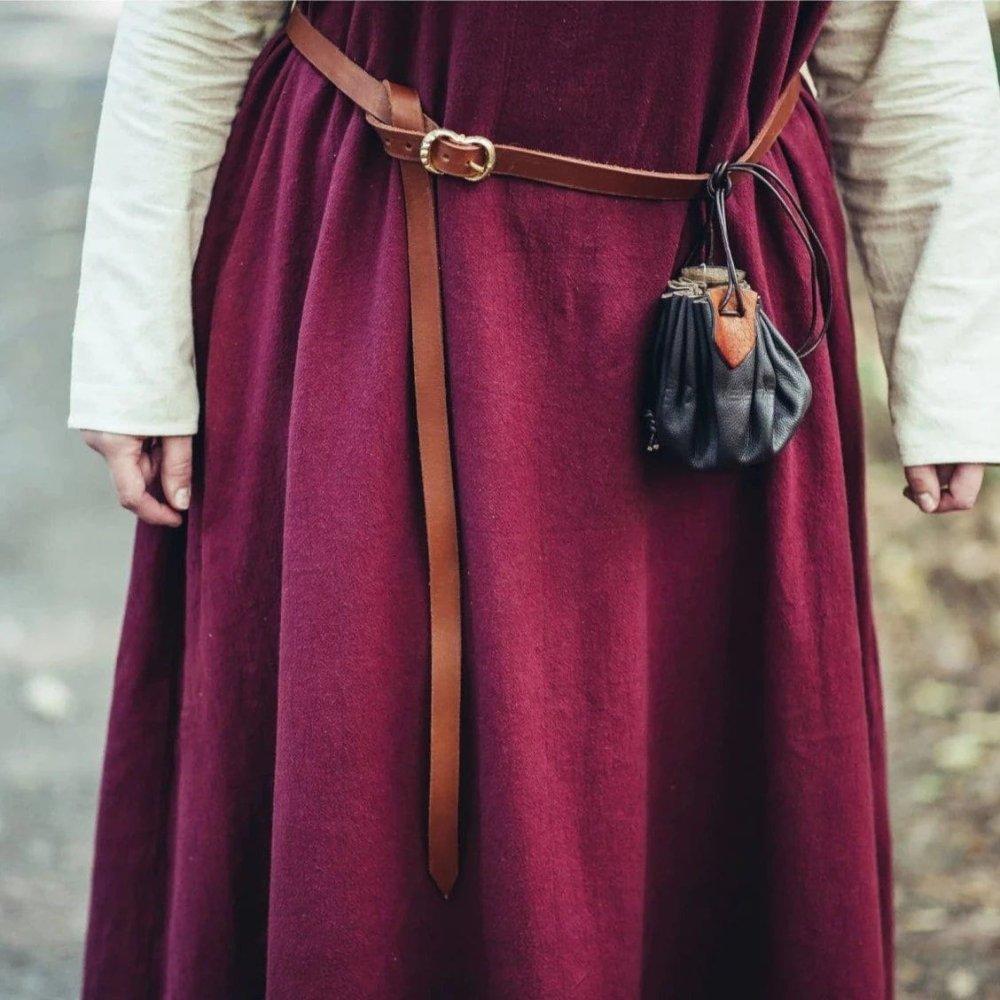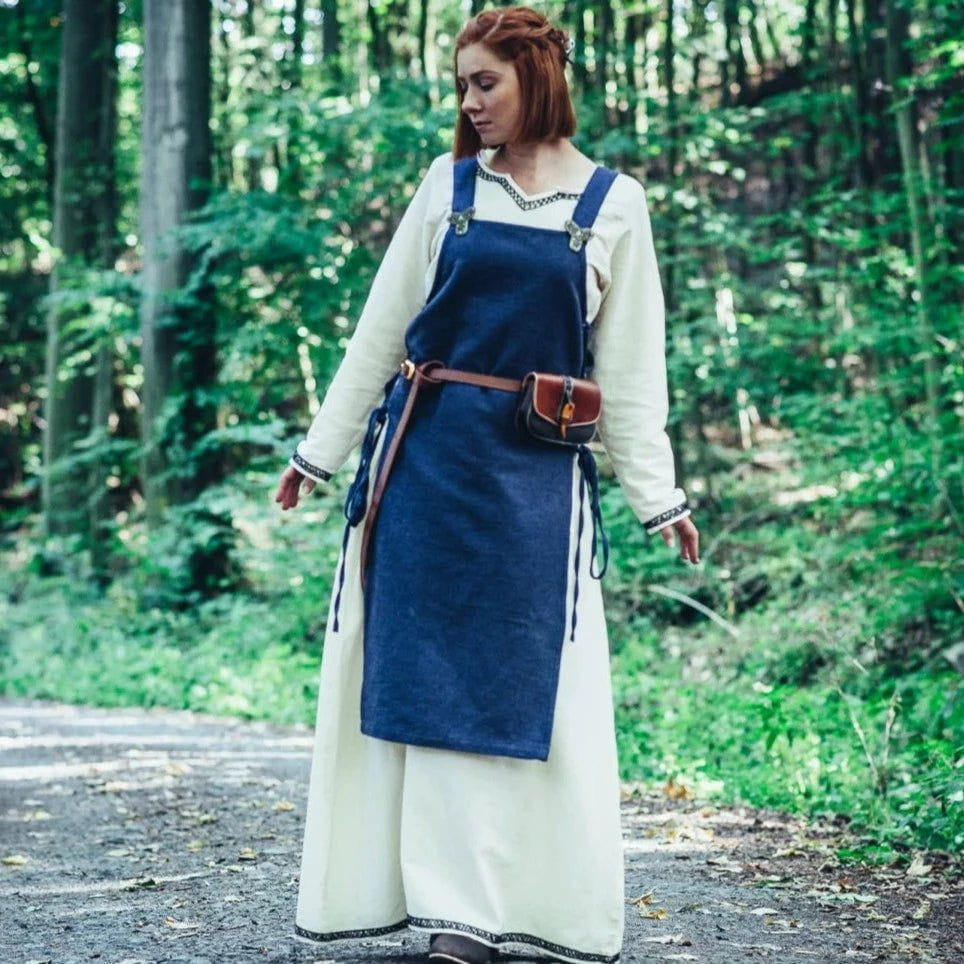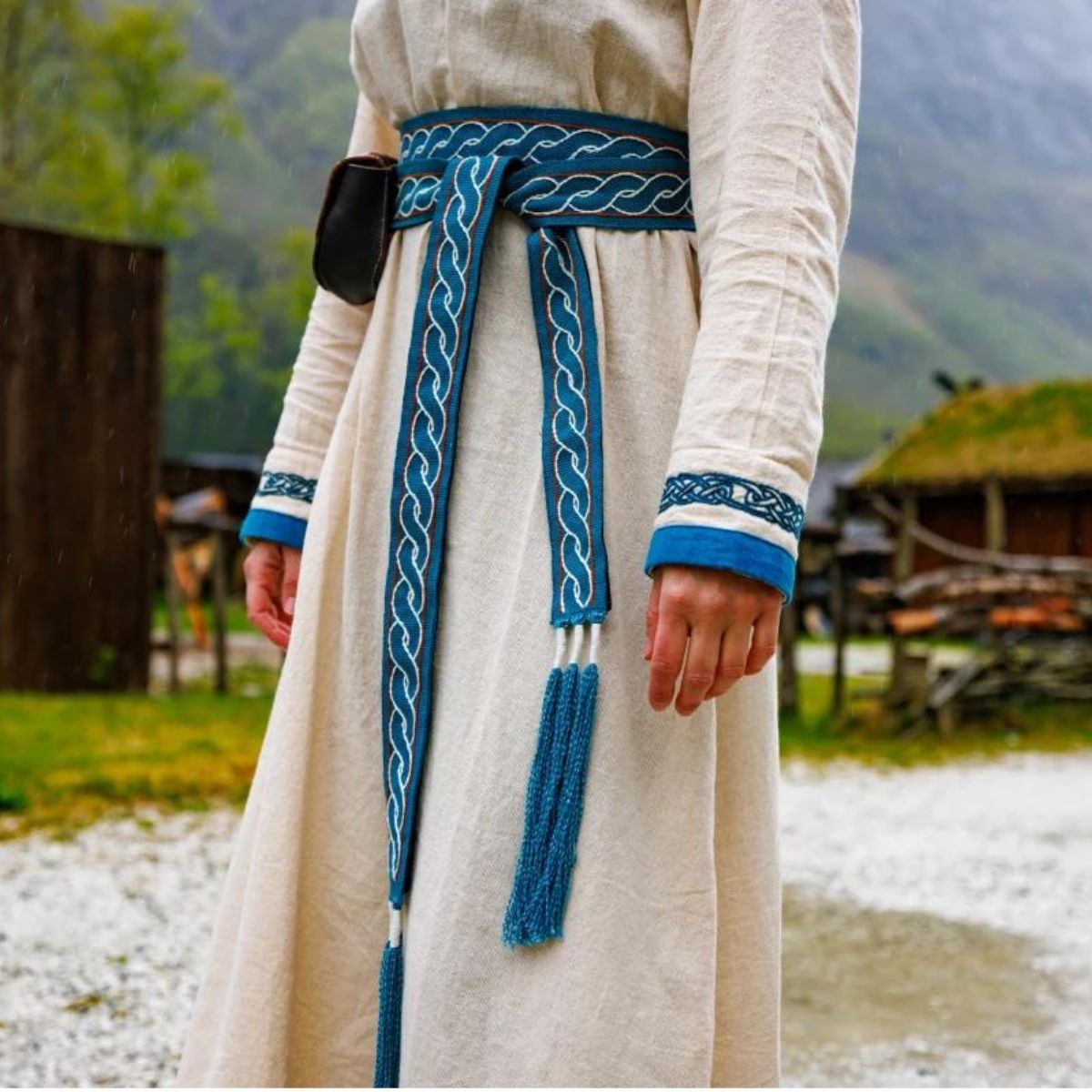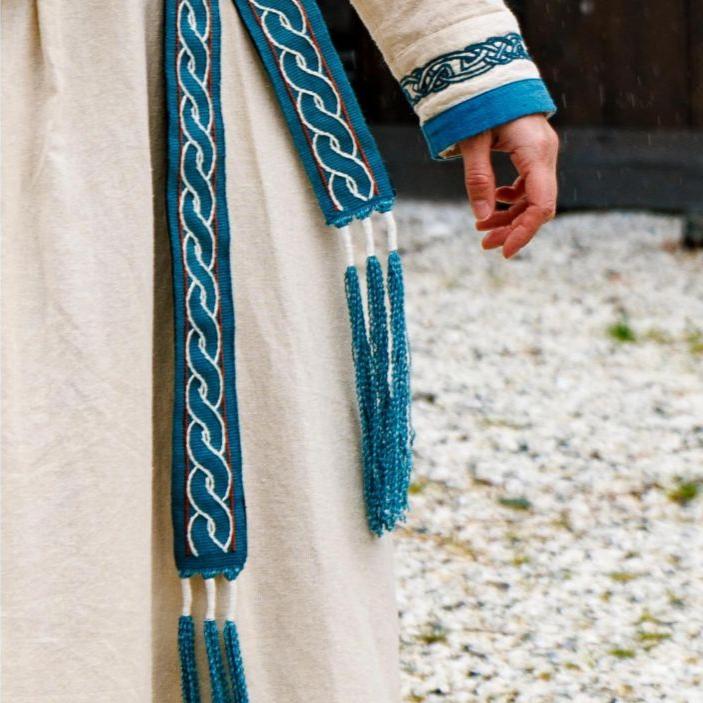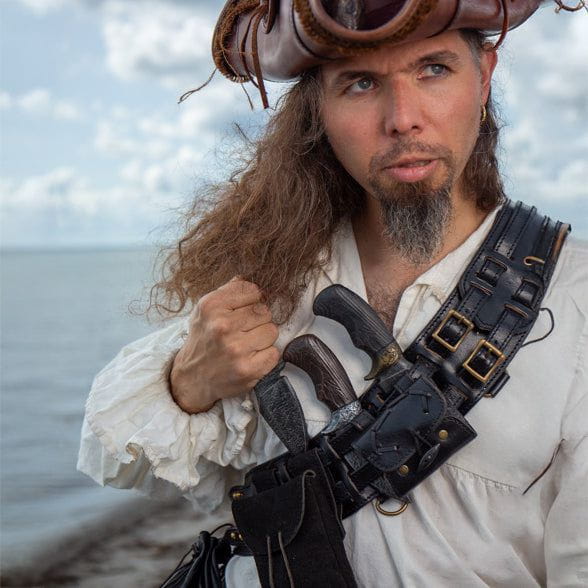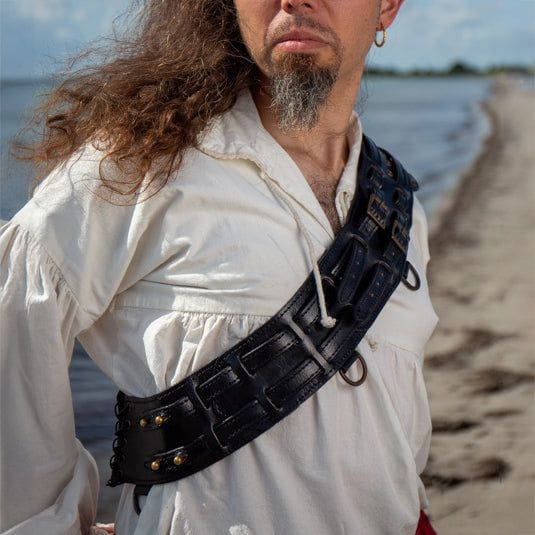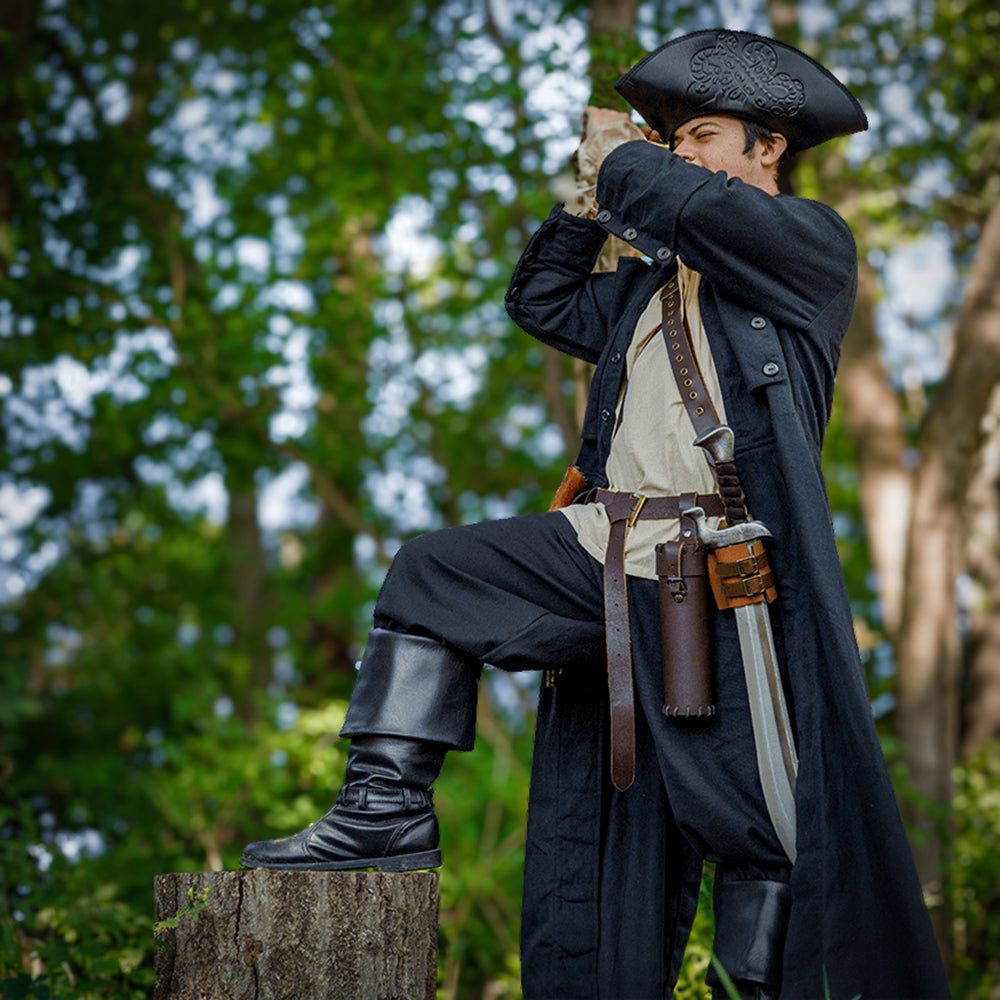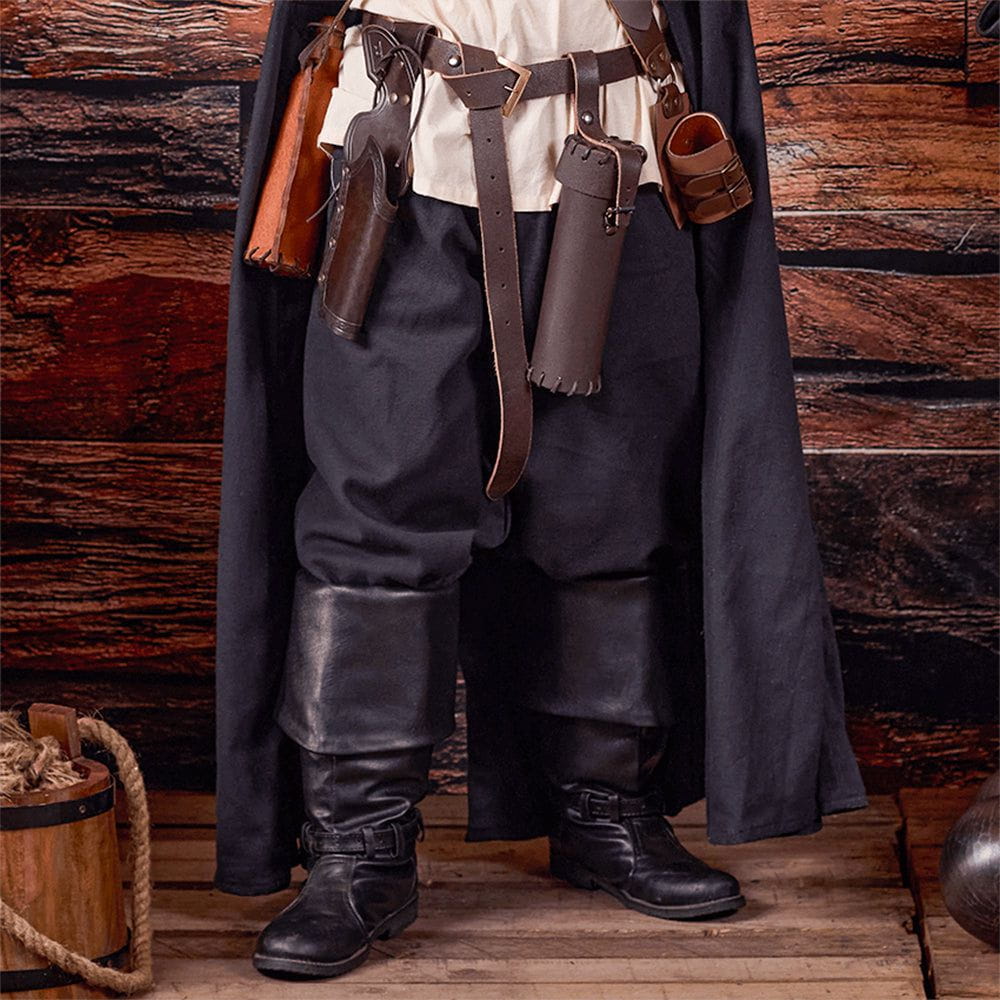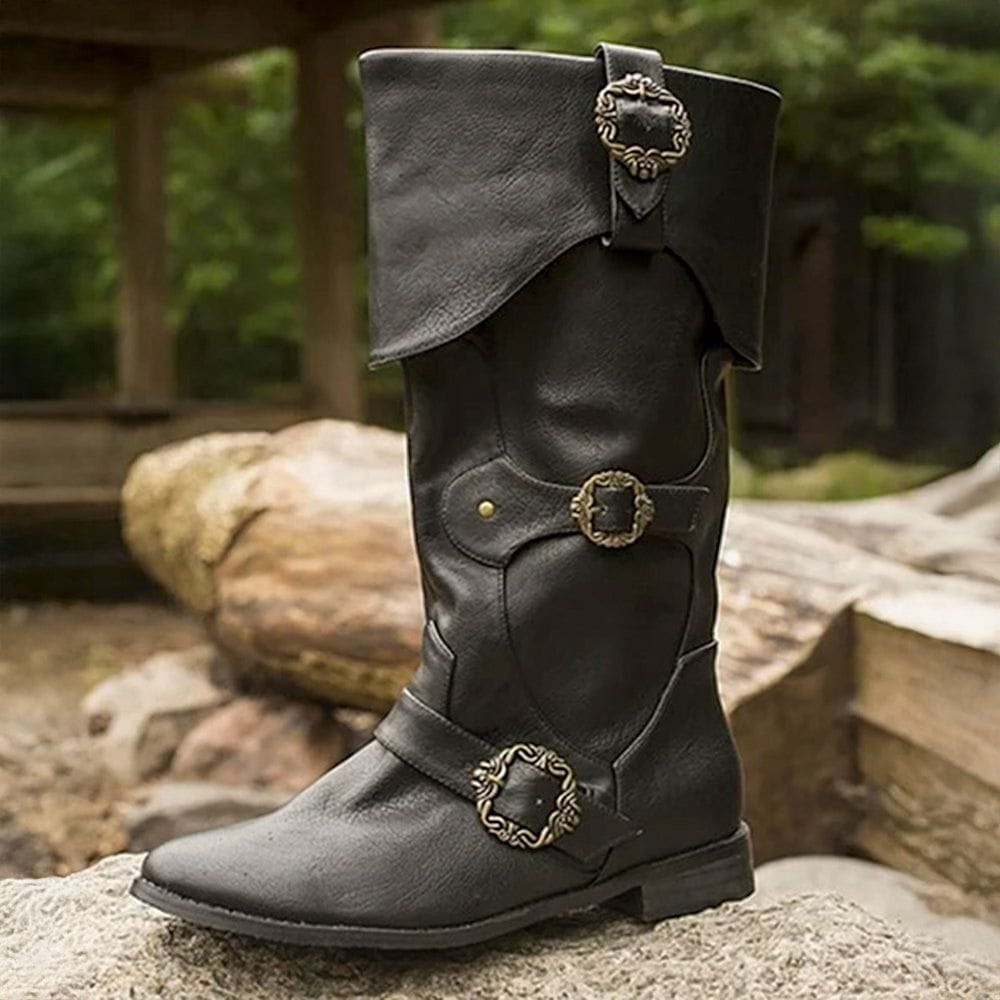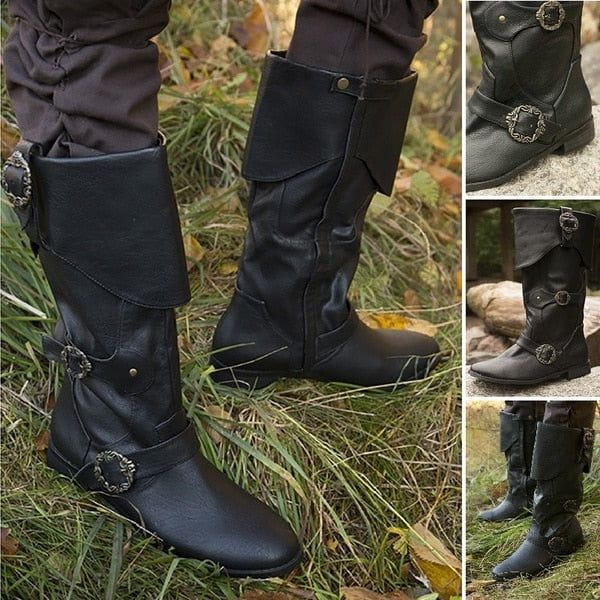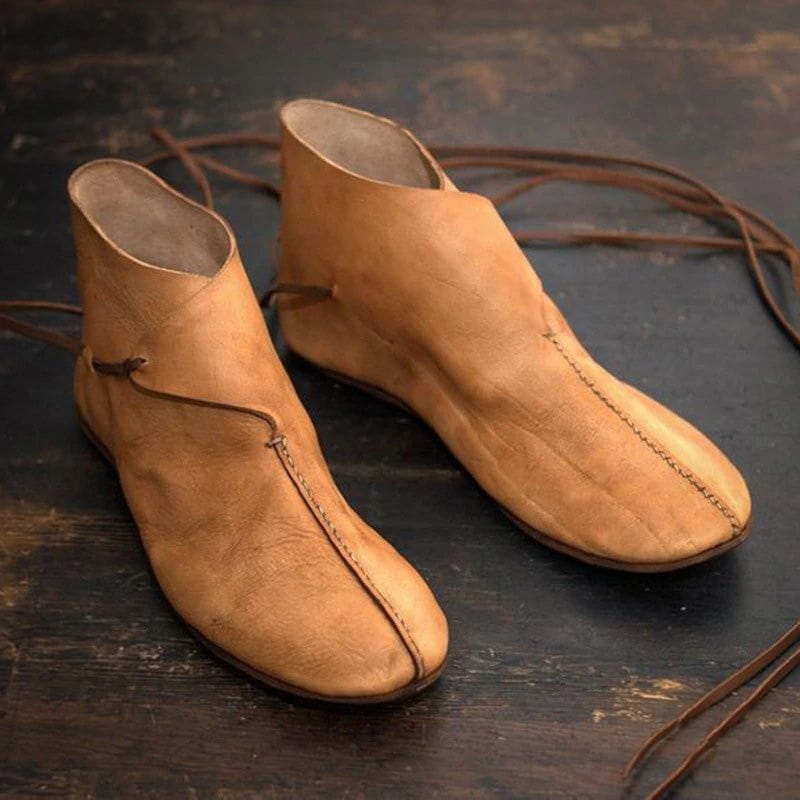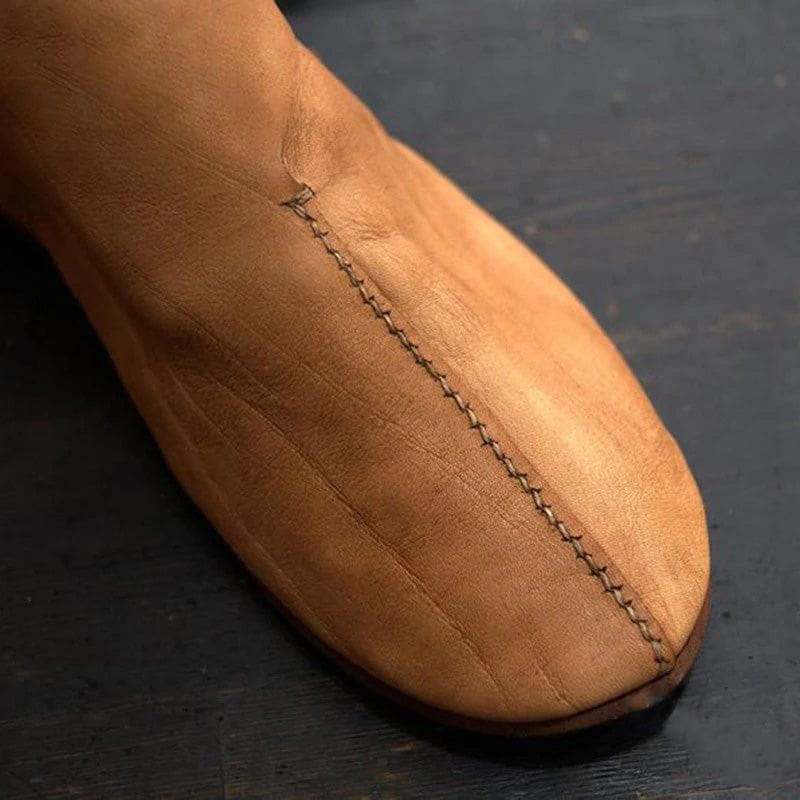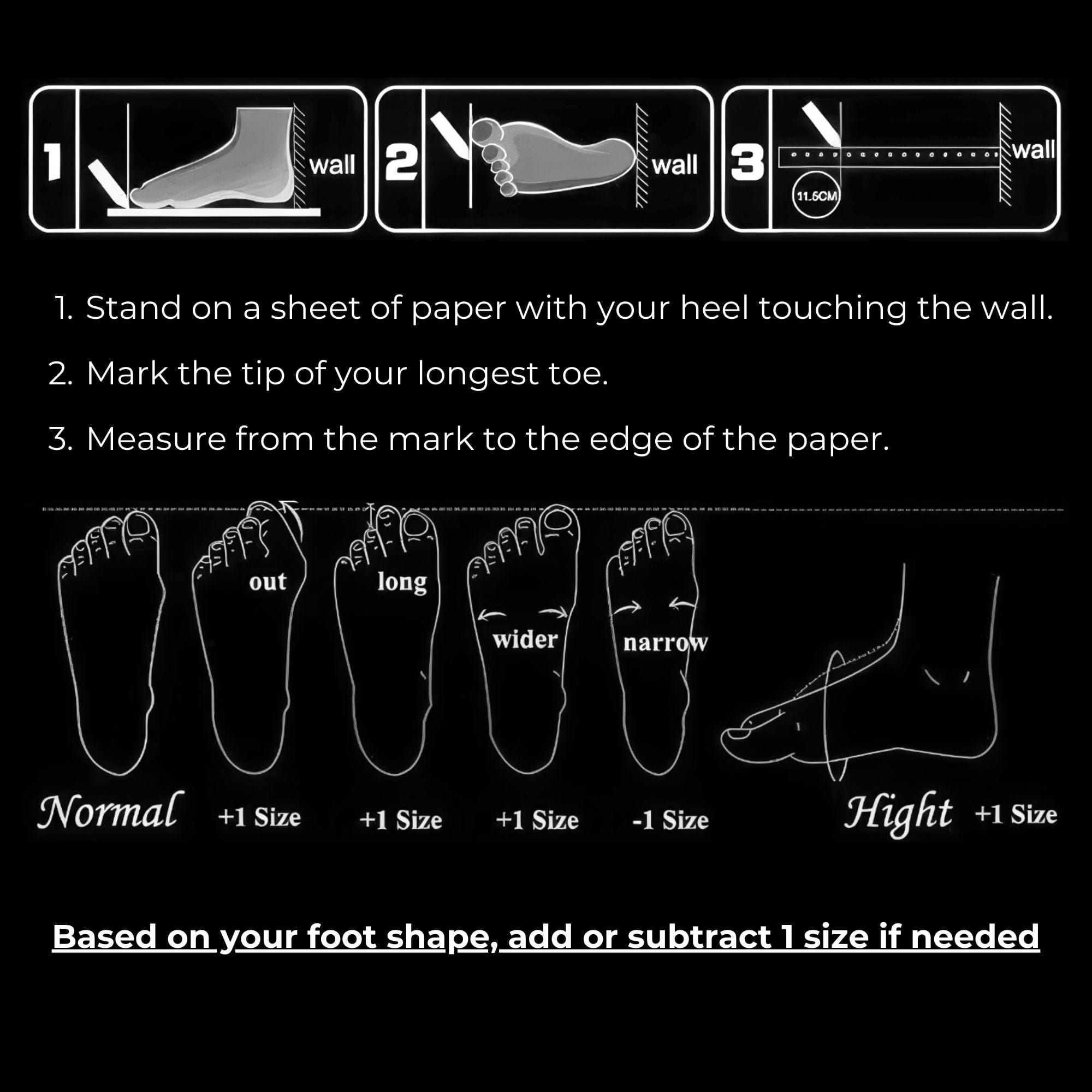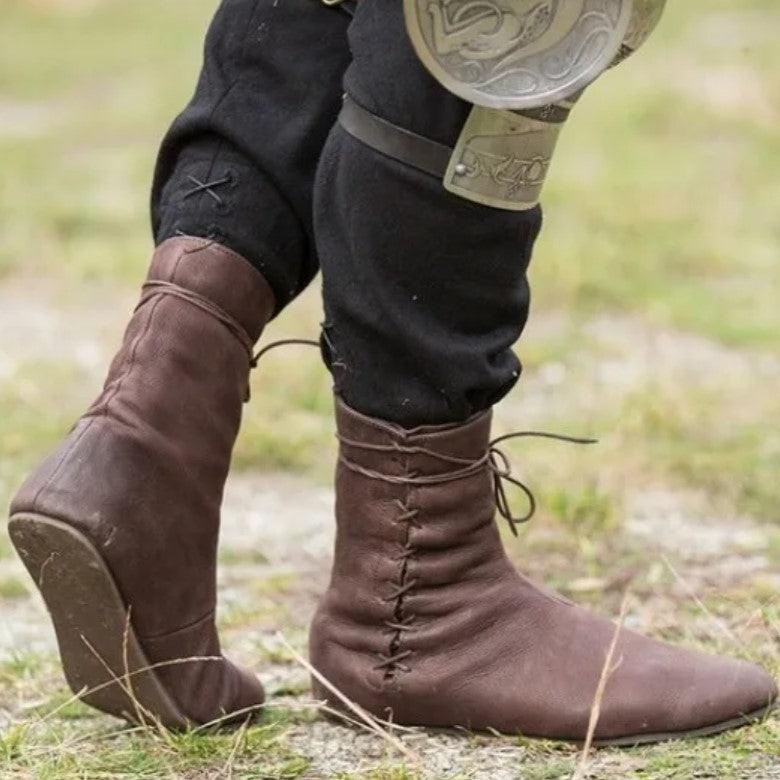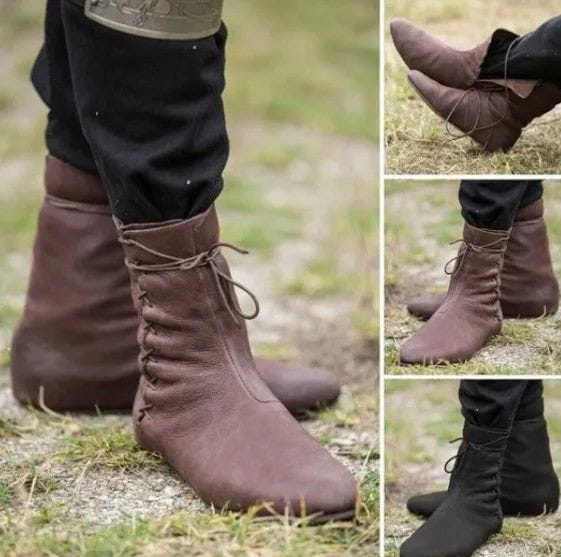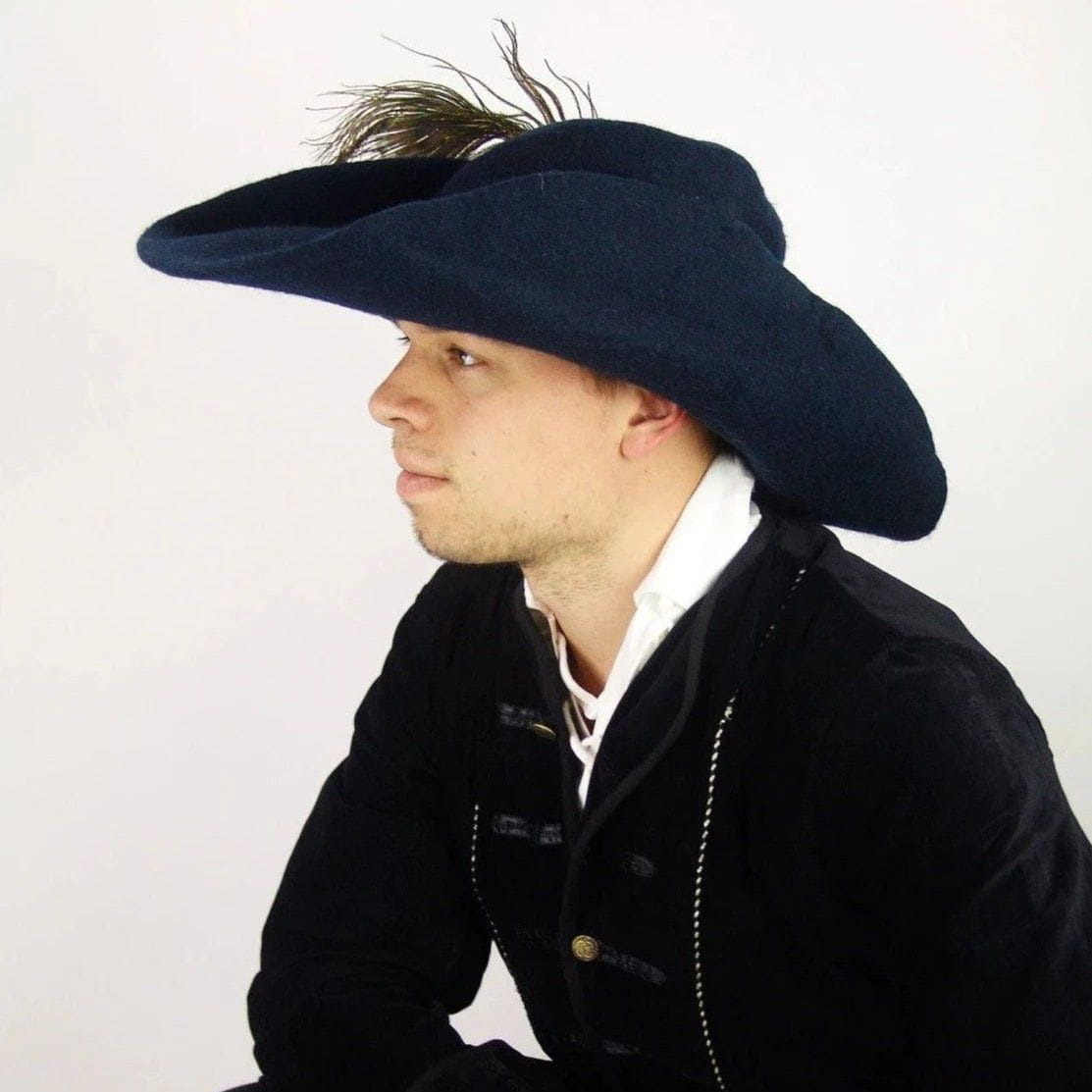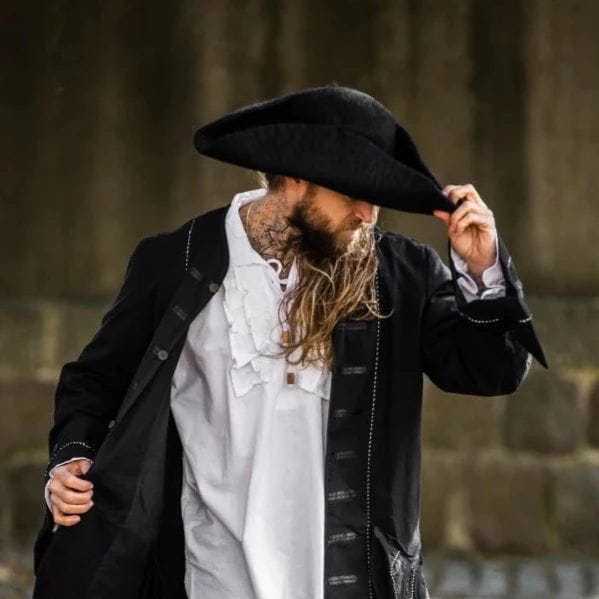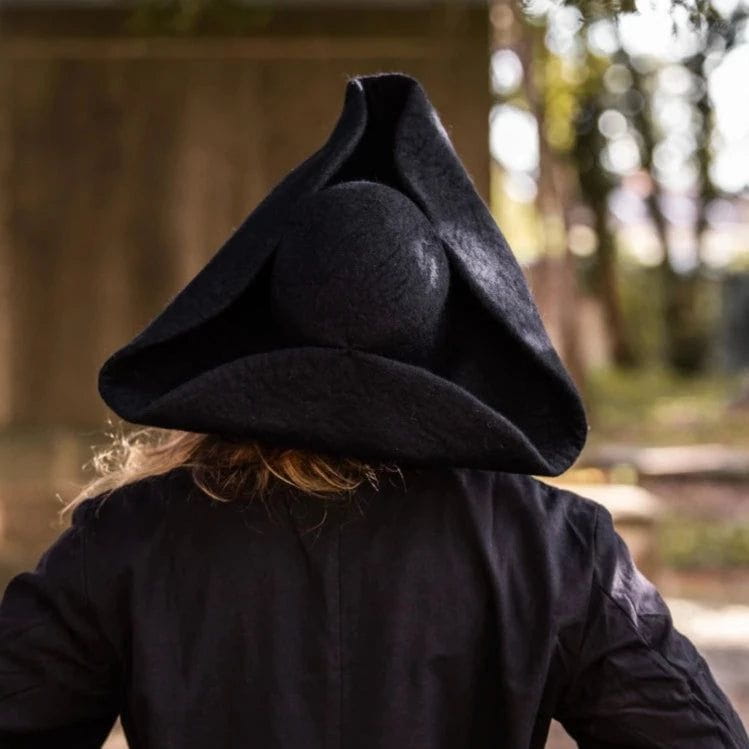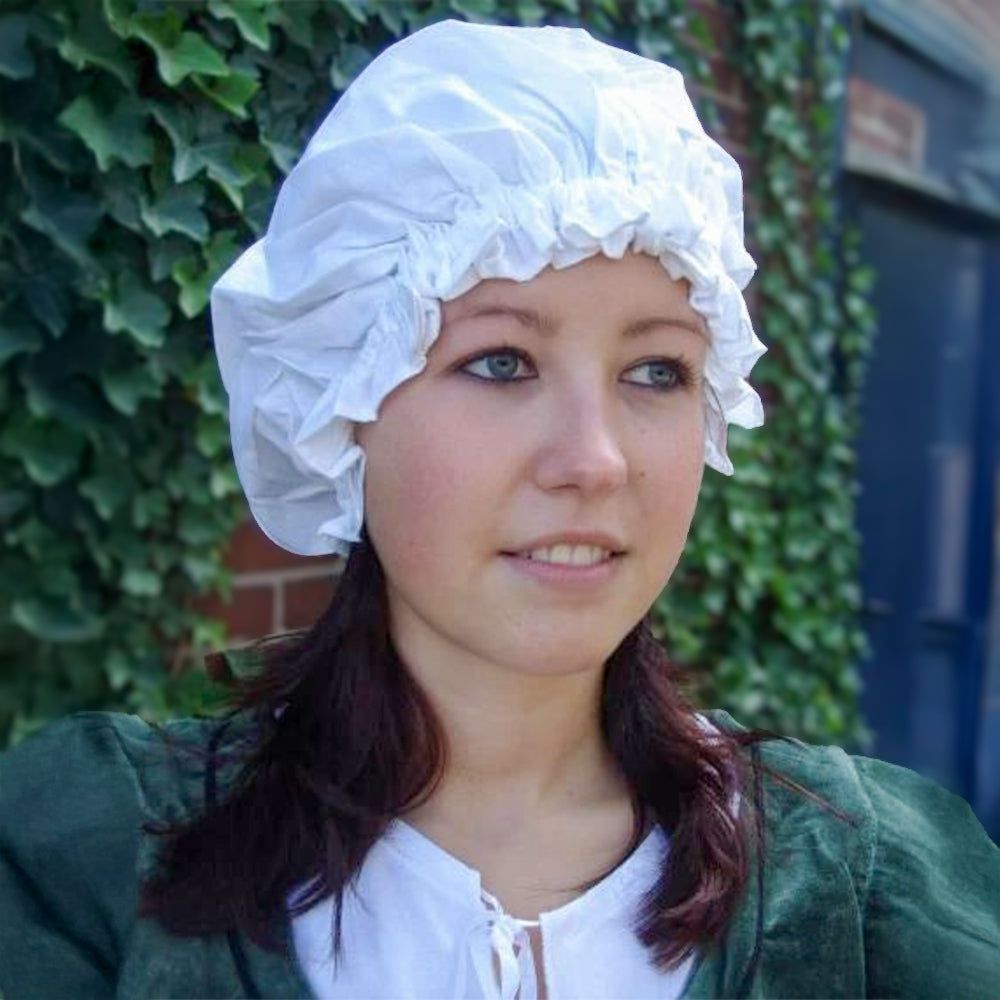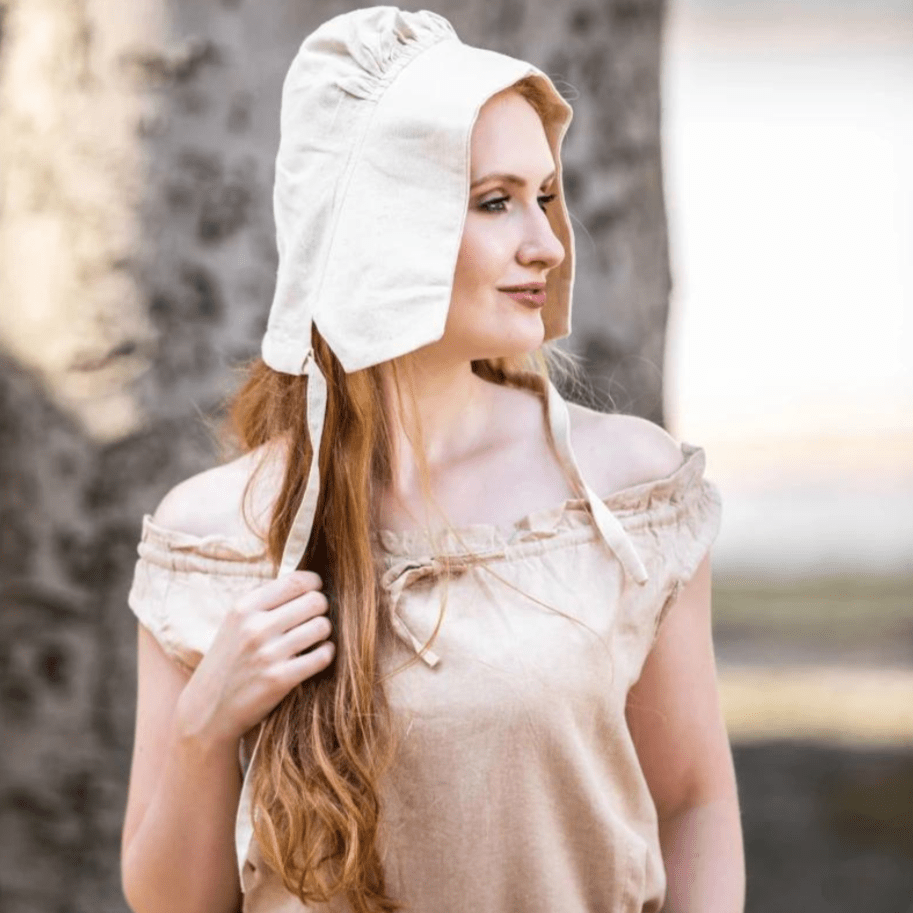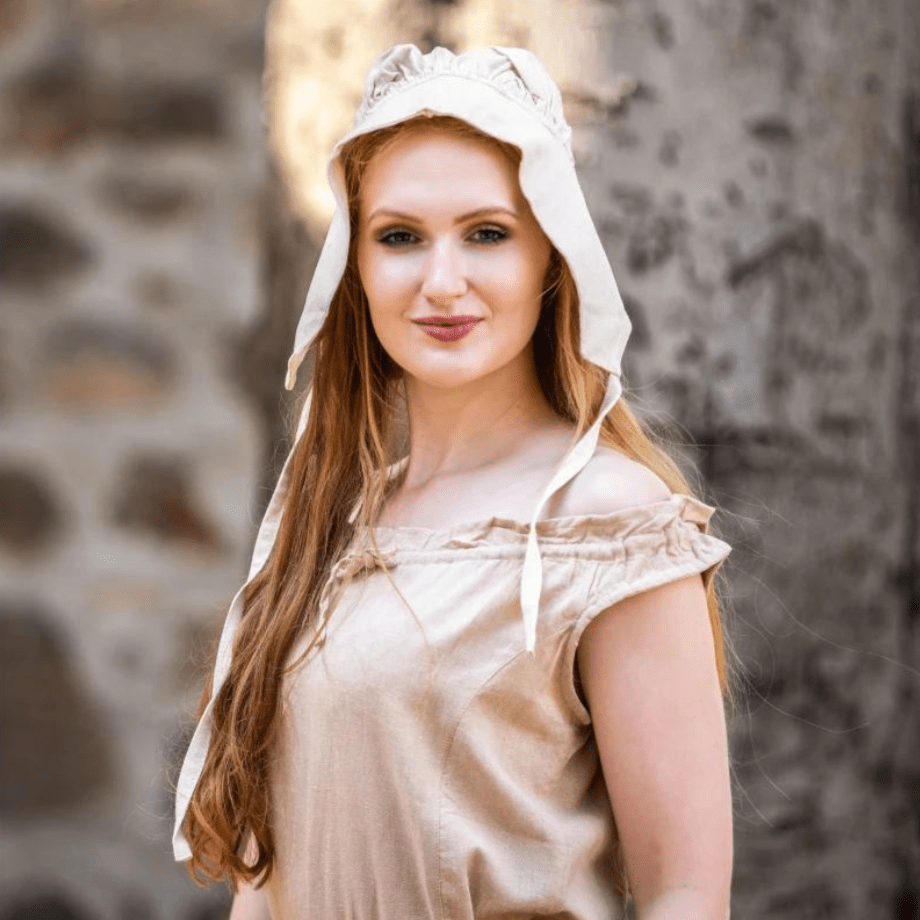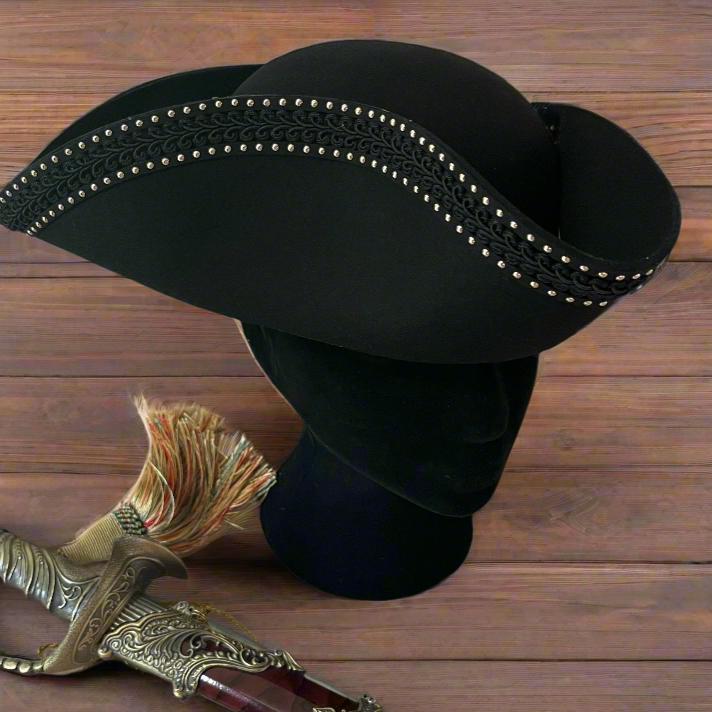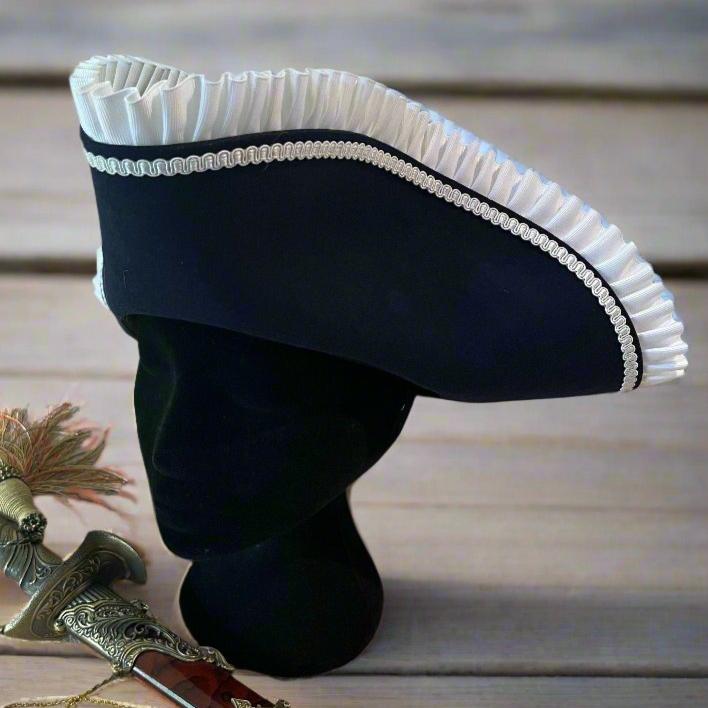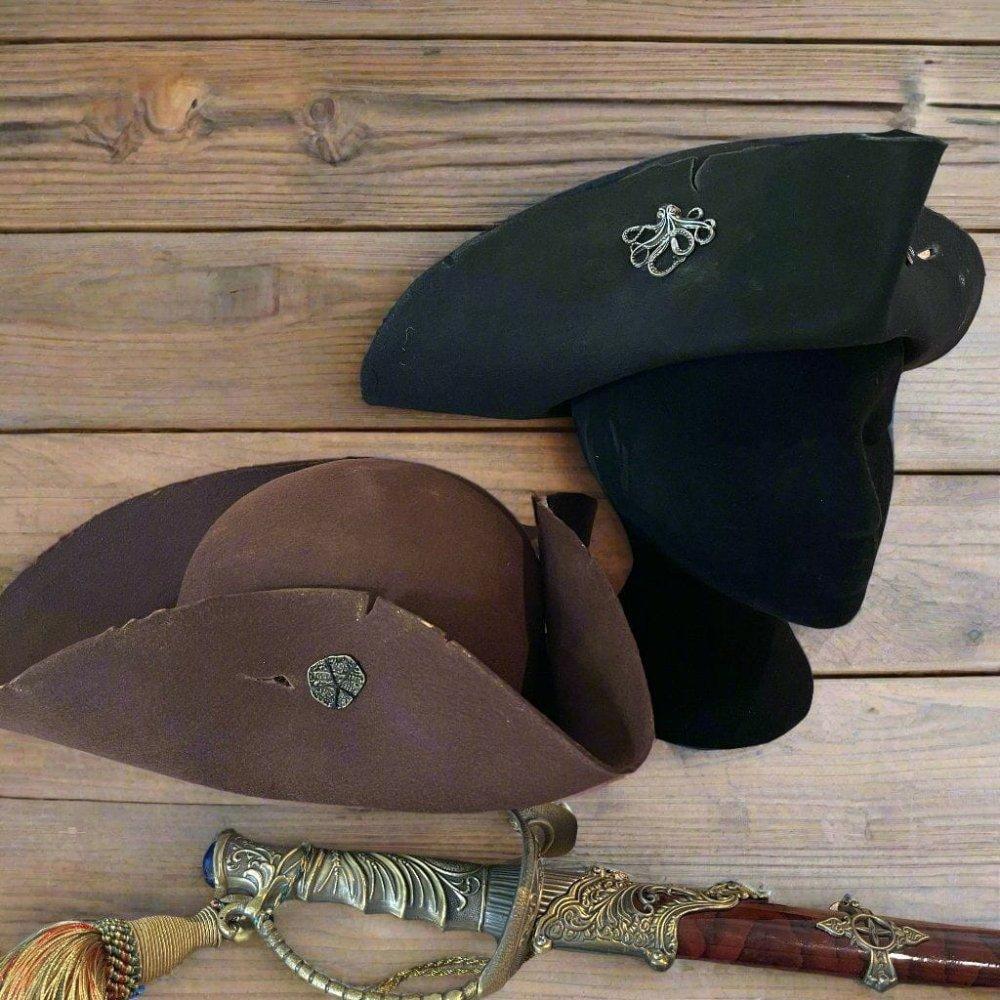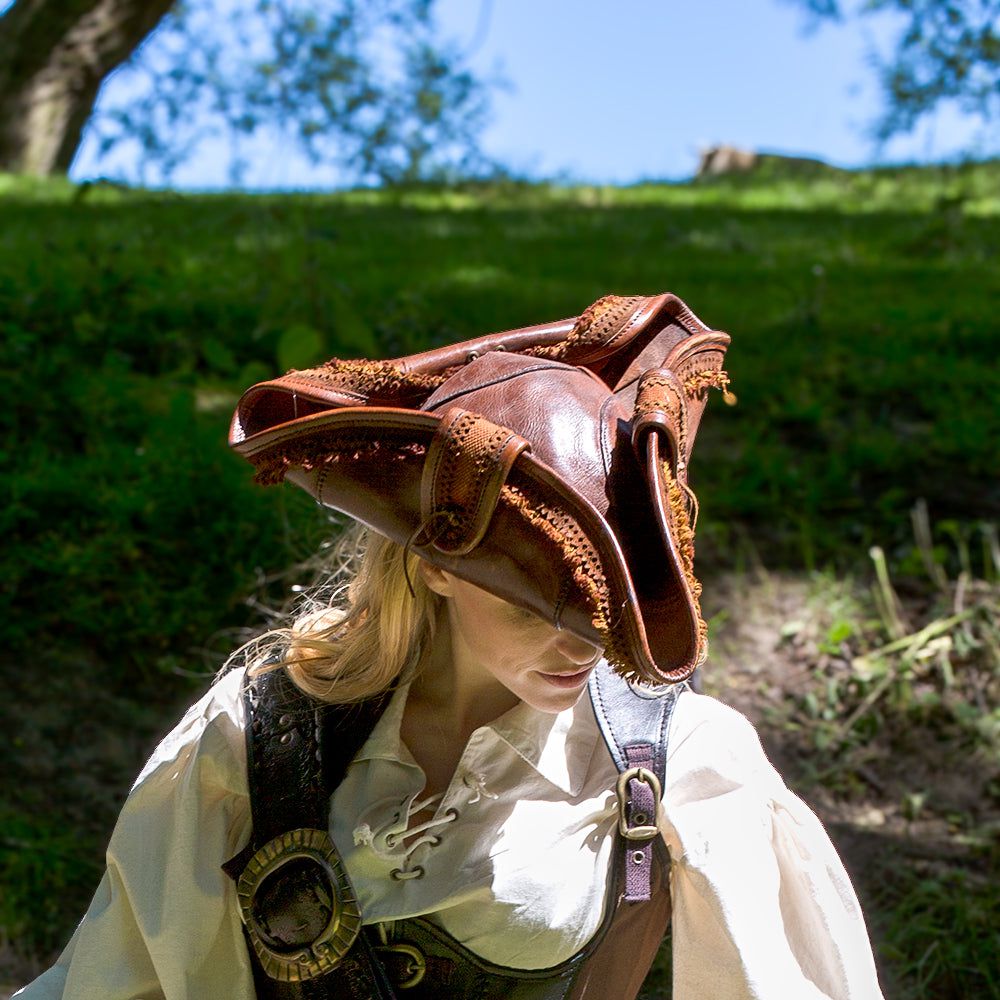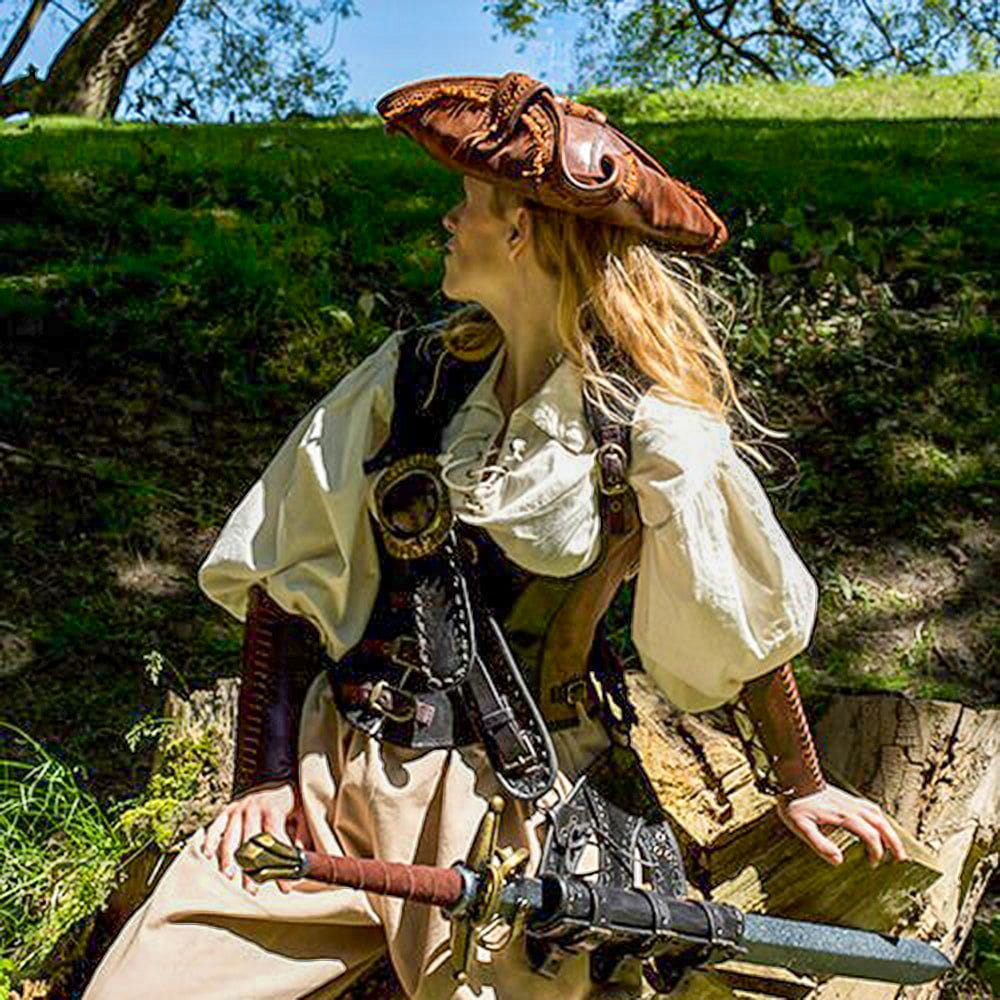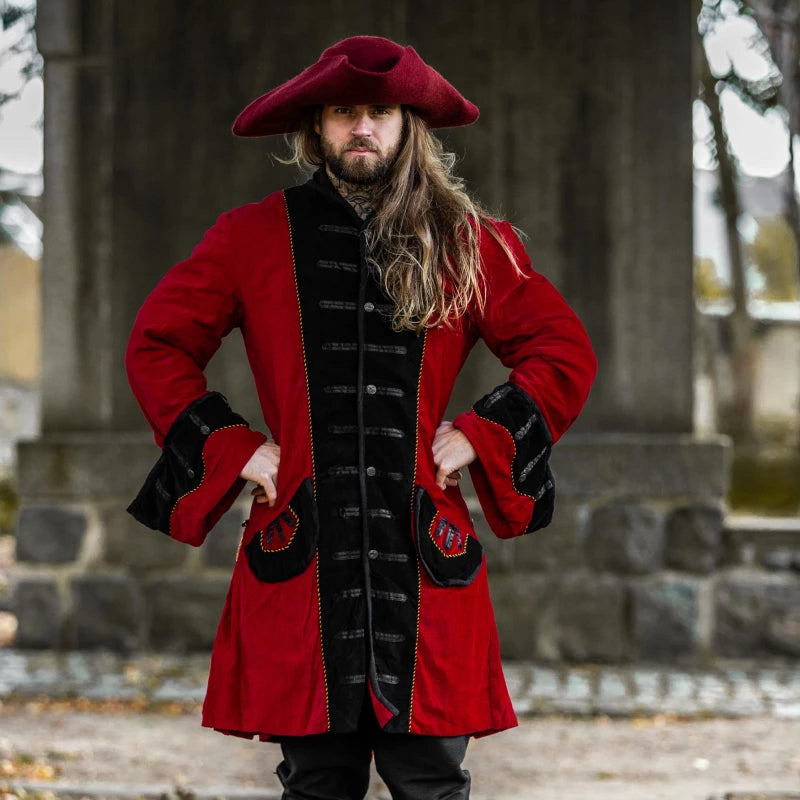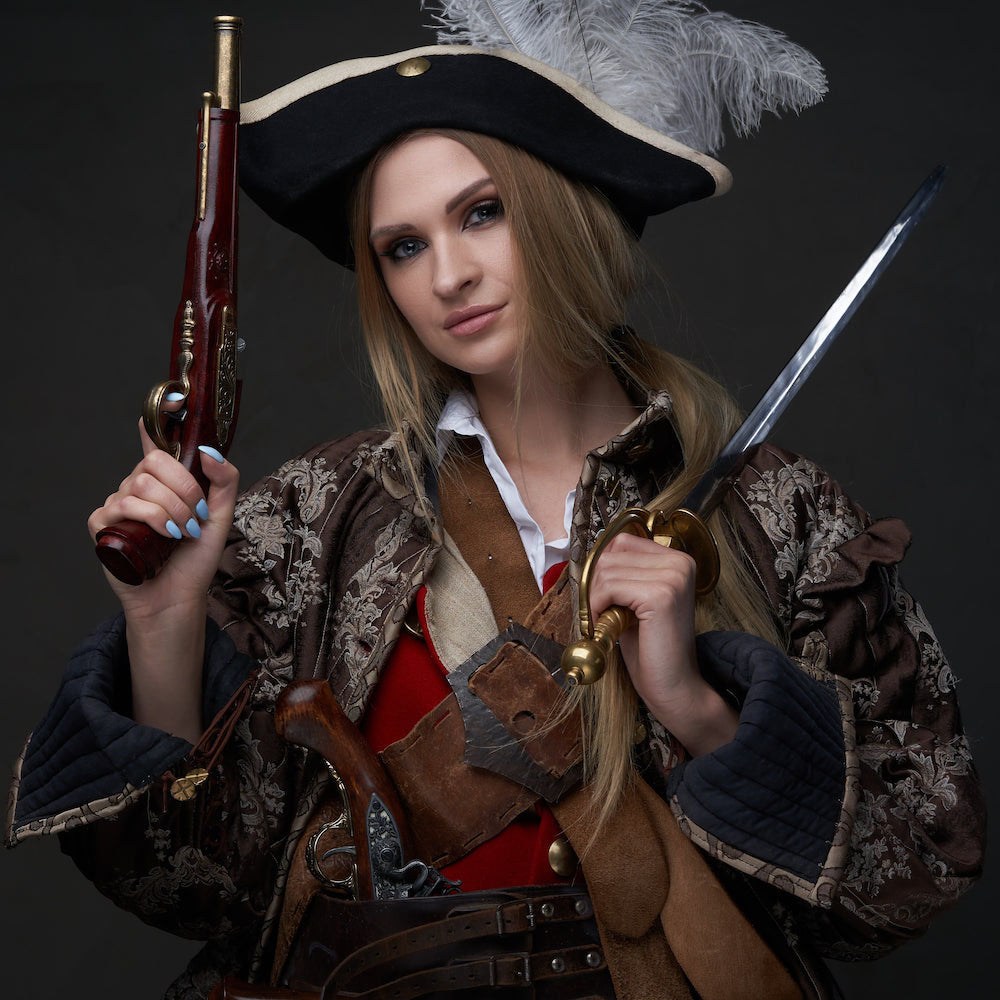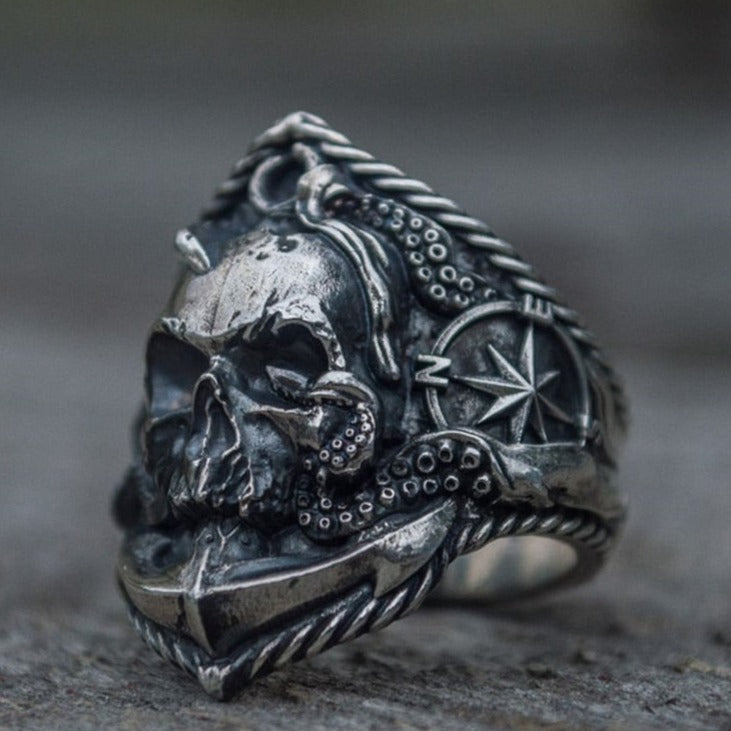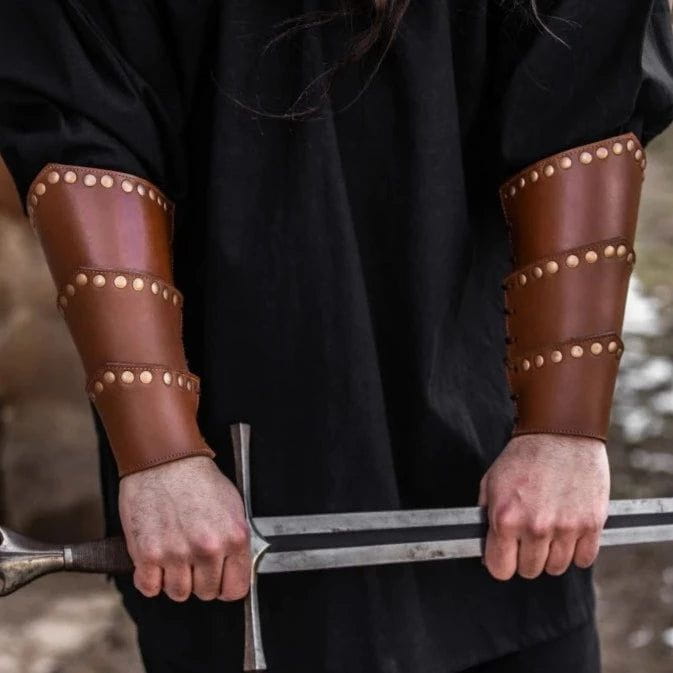MEN'S PANTS AND BREECHES
TO GO WITH YOUR PANTS...
Let customers speak for us
EXPLORE OUR OTHER COLLECTIONS

14 DAYS CASHBACK
Return items for exchange or refund within 14 days of purchase.

WORLDWIDE SHIPPING
Fast and low-cost US and Worldwide shipping

GUARANTEED QUALITY
Everything we offer is superb quality. If you don't agree we will refund your purchase.

ACCREDITED BUSINESS
We're an American business based in Raleigh, NC.
WHAT OUR CUSTOMERS SAY
“The outfits are wonderful! Beautiful designs to wear for events, I'm very happy with the purchase!"
"They arrived earlier than expected. Right size, very nice and fresh fabric. Very satisfied with the purchase."
“The quality is excellent, it will fit any hand, it is easy to remove/dress, thank you very much to the seller"
Need help?
FREQUENTLY ASKED QUESTIONS
SIZING
ORDERS
- It depends on the item(s) you ordered. Many items are made to order so we always say to allow 12-25 days for delivery in most cases.
- Platinum and Gold Jewelry items are all artisan handmade to order and will take 5-6 weeks normally.
- Our pieces are made by craftsmen in several countries.
- We have spent a lot of time making sure we can offer the best possible quality at fair prices
- At the time of writing our products are mostly made in USA, Ukraine, Nepal, India, China, Spain and France
SHIPPING
- We ship to most countries. If you have a question about a specific country please contact Chrissy at chrissy@pirateclothingstore.com
Yes - absolutely!
- We at Pirate Clothing Store guarantee lowest possible shipping costs on every order, no matter where in the world you are. We feel strongly that we should not profit from shipping.
- Occasionally we get an unusual shipping request which may incur additional cost, but we will let you know that before you place your order.
Sometimes, we may run out of our custom gift boxes and have periods when the stock for them has not arrived. If a batch shipping day arrives, we will package your order as simply as possible to make sure it gets out to you.
RETURNS
We are happy to return any product within 14 days - just return it in new unused condition to us for full refund or exchange. Just contact Chrissy and she will send you information on where to return it, and will handle any refund or exchange for you. Chrissy is at chrissy@pirateclothingstore.com
- Please contact Chrissy (chrissy@pirateclothingstore.com) and she will take care of it for you
CARING FOR STEEL JEWELRY
Please see our advice here
- Please contact Chrissy (chrissy@pirateclothingstore.com) and she will be happy to help
A Pirate's Life
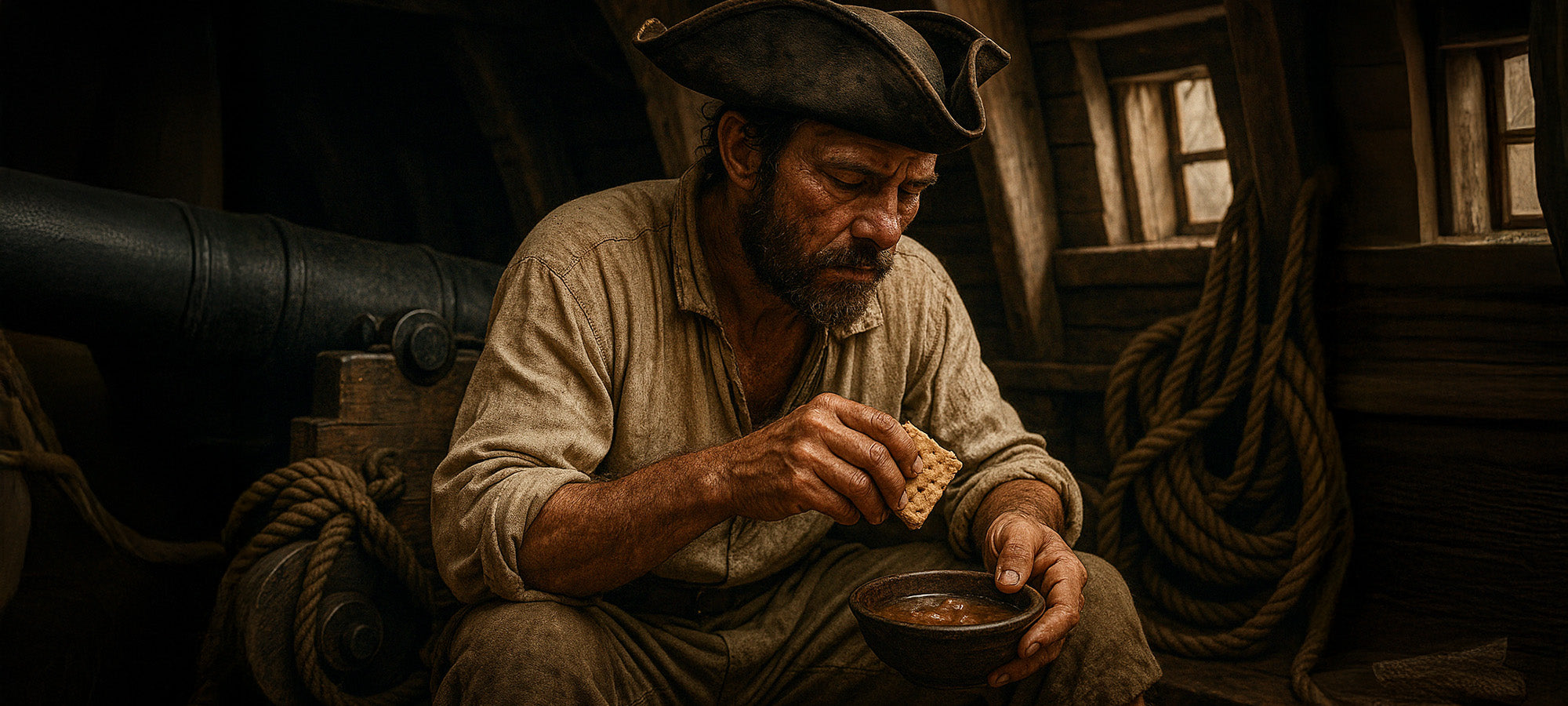
Pirate Food: Cuisine Onboard Ship During the Golden Age of Piracy
When we think of swashbuckling pirates and naval crews of the 17th and 18th centuries, images of tall ships, hidden treasure, and cannon battles usually come to mind. But behind the scenes—and ofte...
Read more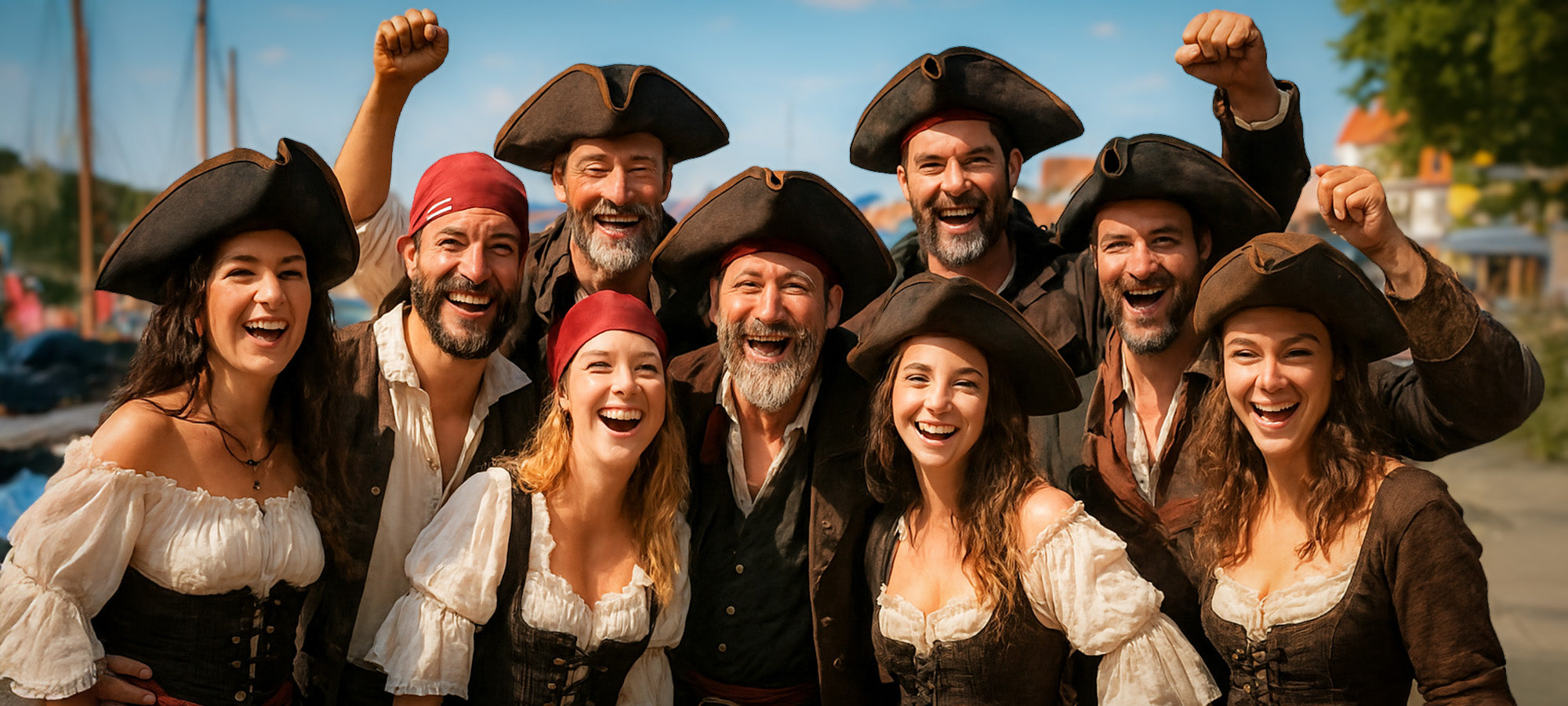
Pirate Festivals and Events - Time to Don Your Pirate Outfit
We've compiled a list of some of the most exciting pirate festivals and events happening in your part of the world. From grand parades to thrilling reenactments, these pirate festivals offer a chan...
Read more
Introducing "Sailing Against the Tide," A Novel by Carol Busby
The writer and historian has published a new work of fiction that reimagines the life of one of history’s most enigmatic pirates—Anne Bonny. Who was Anne Bonny? Very little of her early life is kno...
Read more
Are you ready to set sail on a fashion adventure and embrace your inner swashbuckler? Whether you're searching for the perfect pirate costume for women, or simply looking to add a touch of pirate flair to your everyday wardrobe, we've got you covered. Our guide will help you create a stunning pirate outfit that will make you the talk of any party or event.
Gone are the days when pirate outfits were limited to Halloween. With the rise of pirate cosplay and themed events, there's never been a better time to embrace your inner buccaneer. Whether you're attending a renaissance fair, a steampunk gathering, or a themed birthday party, a well-crafted pirate outfit is sure to make a statement.
But what makes a great pirate costume? Is it the hat, the boots, or the sword? The truth is, it's all about the details. From the perfect pirate blouse to the right accessories, every element of your pirate outfit should work together to create a cohesive and authentic look.
Key Takeaways
- Pirate costumes are no longer limited to Halloween; they're perfect for various themed events and cosplay occasions.
- Women's pirate costumes are increasingly popular, with a focus on both sexy and authentic styles.
- Attention to detail is key when creating a convincing pirate outfit, from the hat to the boots.
- Mixing and matching elements from different pirate styles can create a unique and personalized look.
Inspiration for pirate outfits can be found in popular culture, such as the Pirates of the Caribbean franchise.

Creating a pirate outfit involves several key elements. From the iconic tricorn hat to rugged boots, each piece is crucial. Whether you're looking for a pirate outfit male, pirate attire for a female, or just inspiration, knowing these essentials is key.
Pirate Hats and Headwear
The right headwear is essential for a pirate look. The tricorn hat, with its three points, is a classic choice. You can also try bandanas, headscarves, or eye patches for mystery. Pick a hat that fits your pirate costume male or female style.
Pirate Shirts and Blouses
Pirate shirts and blouses are loose and flowy. They often have lace-up fronts and puffy sleeves. For a realistic female pirate costume, choose a billowing white blouse. Men can wear various pirate shirts, paired with a vest or waistcoat.
Pirate Pants, Skirts, and Dresses
Pirates have many bottom options. For a classic male pirate outfit, pair your shirt with black or brown trousers. Women can wear skirts or dresses with ruffles and corset-style lacing. Experiment with fabrics and textures for a unique look.
Pirate Boots and Footwear
Tall boots are essential for a pirate look. Knee-high boots add style and function. Look for boots in black or brown with buckles or straps. Visit a pirate shop or thrift store for unique and affordable options.

No pirate costume is complete without the right accessories. These details bring your pirate costume womens look to life. From eye patches to parrots, swords to scarves, these items will make your pirate woman costume shine.
Eye Patches and Parrots
An eye patch is a key part of any pirate look. You can pick from classic black or something more fancy. Add a stuffed parrot on your shoulder for a fun, authentic touch. Together, they show you're a true pirate.
Swords, Daggers, and Pistols
Every pirate needs their weapons. For your pirate outfits female, add a sword, dagger, or pistol. You can wear them on your belt or sash. This adds a bit of danger and adventure to your costume.
Belts, Sashes, and Scarves
Belts, sashes, and scarves are great for adding color and tying your look together. Choose bold colors and patterns for your pirate costume womens. A red sash or colorful scarf can make your pirate woman costume stand out.
"The right accessories can take your pirate costume from ordinary to extraordinary. Don't be afraid to mix and match items to create a look that's uniquely yours."
By picking the right accessories, you can make a womens pirate outfit that's both authentic and eye-catching. The key to a great pirate outfits female is in the details. Have fun trying different combinations until you find the perfect fit for your swashbuckling look.

Get ready to be a swashbuckler with these female pirate outfit ideas. They're great for any event. You can be a pirate queen or a pirate lass, depending on your style. These costumes are perfect for any adventure.
Sexy Pirate Queen Costume
Be a siren of the seas with a pirate queen costume. Wear a corset top with lace and gold. Pair it with a short, ruffled skirt in burgundy or black.
Put on thigh-high boots for a sexy look. Top it off with a regal pirate hat and gold jewelry. You'll feel like a true queen.
Swashbuckling Pirate Wench Outfit
Go for a bold female pirate outfit with a pirate wench look. Start with a low-cut blouse and a fitted vest in rich colors. Wear fitted pants or leggings with tall leather boots.
Use a wide belt, bandana, and hoop earrings for a buccaneer vibe. Add a toy sword or pistol for the full woman pirate costume effect.
Modest Pirate Lass Ensemble
Choose a cute pirate costume with a pirate lass look. Wear a flowing skirt with a bold pattern and a laced bodice. Add a cropped jacket or shawl for style and warmth.
Finish with boots or flats and simple jewelry. This female pirate cosplay is charming and modest, great for family events or those who like a simpler look.
Remember, confidence and adventure are key to any pirate look. The right attitude makes any pirate costume stand out!

Men have many options for the perfect pirate look. You can be a dashing pirate captain or a rugged crew member. The right clothes and accessories can turn you into a pirate from the golden age.
Dashing Pirate Captain Costume
For a pirate captain look, start with a ruffled white shirt and a black or burgundy vest. Wear breeches or trousers and tall leather boots. Add a long, embroidered coat, a tri-corner hat, and a bold belt.
Don't forget a sword, pistol, and maybe a telescope. These will complete your captain's look.
Rugged Pirate Crew Member Outfit
For a haggard pirate look, choose a loose white or off-white shirt and a simple vest. Wear trousers and short, worn boots. A wide belt will cinch your waist.
Top it off with a bandana or head scarf. Add an eye patch or earring for flair. Carry a sword or dagger to finish your look.
Pirates have had a big impact on popular culture. Their adventures and style are seen in many books and movies. By wearing pirate fashion, you can connect with this rich history and make a lasting impression.
Choose your pirate outfit wisely. Wear it with confidence and a sense of adventure. With the right attitude and details, you'll be ready for your next pirate adventure.

Pirate costumes are great for couples and groups too. Pinterest shows they're a top pick for Halloween. It also has lots of ideas for women's pirate outfits, including DIY options.
Couples love pirate costumes for Halloween. They're also popular in college and as group costumes. Pinterest shows people enjoy picking out costumes together.
Captain and First Mate Duo
A Captain and First Mate duo is a hit for couples. The Captain wears a fancy coat, hat, and boots. The First Mate has a simpler outfit that matches.
Add eye patches, swords, and sashes for a complete pirate look.
Pirate Crew Group Costume
Dress up as a pirate crew for a big group. Everyone can pick a role like navigator or cook. Use different colors and accessories to make it look good together.
Remember, pirate costumes need tricorn hats, bandanas, and toy parrots.
DIY pirate costumes are getting creative. People like costumes based on Pirates of the Caribbean characters. There's a wide range of styles, from classic to modern, for everyone to enjoy.

Creating a pirate costume for women is easy and affordable. You can make a great ladies pirate costume DIY style. It's perfect for Halloween, themed parties, or just for fun. Follow these tips to make an easy pirate costume women will adore.
Using Everyday Clothes for a Pirate Look
Begin by checking your closet. A white or off-white blouse and a black or brown vest are a good start. If you don't have a vest, use an old jacket or make one from felt fabric. You can find felt at craft stores like Walmart or Amazon.
For pants or a skirt, choose black or brown. You can even make a pirate skirt from an old pair of jeans or a long skirt. Add boots or sandals, and you're ready for a pirate look.
Creating Authentic-Looking Pirate Accessories
Accessories make a pirate costume complete. Make an eye patch with black felt and elastic. A red or black bandana tied around your head adds a classic touch. For a pirate hat, use black felt and follow a simple tutorial online.
To make a pirate vest, you need three pieces of fabric, a button, and basic sewing skills. This pattern works for other costumes too, like knight's armor or a ladybug shell.
Other accessories to think about include:
- A toy parrot or monkey to perch on your shoulder
- Gold or silver jewelry, like hoop earrings or a statement necklace
- A belt or sash for your waist
- A toy sword or pistol for the pirate look
By mixing everyday clothes with handmade accessories, you can make a pirate costume without breaking the bank. So, get your materials ready, be creative, and get ready for a pirate adventure in your DIY pirate outfit.

Pop culture is a treasure trove for pirate costume ideas. It's filled with swashbuckling tales and legendary pirates. From Captain Jack Sparrow to Elizabeth Swann, and even historical figures like Anne Bonny and Mary Read, there's plenty to draw from.
The Pirates of the Caribbean films have made pirate fashion popular. Jack Sparrow's look, with his tricorn hat and dreadlocks, is iconic. Elizabeth Swann's transformation from lady to pirate shows pirate fashion's versatility.
Jack Sparrow and Elizabeth Swann from Pirates of the Caribbean
To get the jack sparrow elizabeth swann costume, start with basics: a white shirt, dark pants, and boots. Add a vest or coat and accessories like a belt and jewelry. Don't forget the tricorn hat and boots.
For Elizabeth Swann's look, choose a flowing dress, a corset top, and a pirate hat with feathers.
Anne Bonny and Mary Read, Famous Female Pirates
Anne Bonny and Mary Read are famous for their pirate adventures. They disguised themselves as men to join pirate crews. To mimic their style, mix masculine and feminine pirate clothes, like a billowing shirt and a skirt or trousers.
Add a bandana, belt, and boots for an authentic look. This honors these legendary pirates.
Pop culture is full of inspiration for pirate costumes. Whether you want a movie-inspired or historically accurate look, there's something for everyone. Pirate fashion is all about freedom, adventure, and being unique. So, get ready to make waves at any event with your pirate costume.
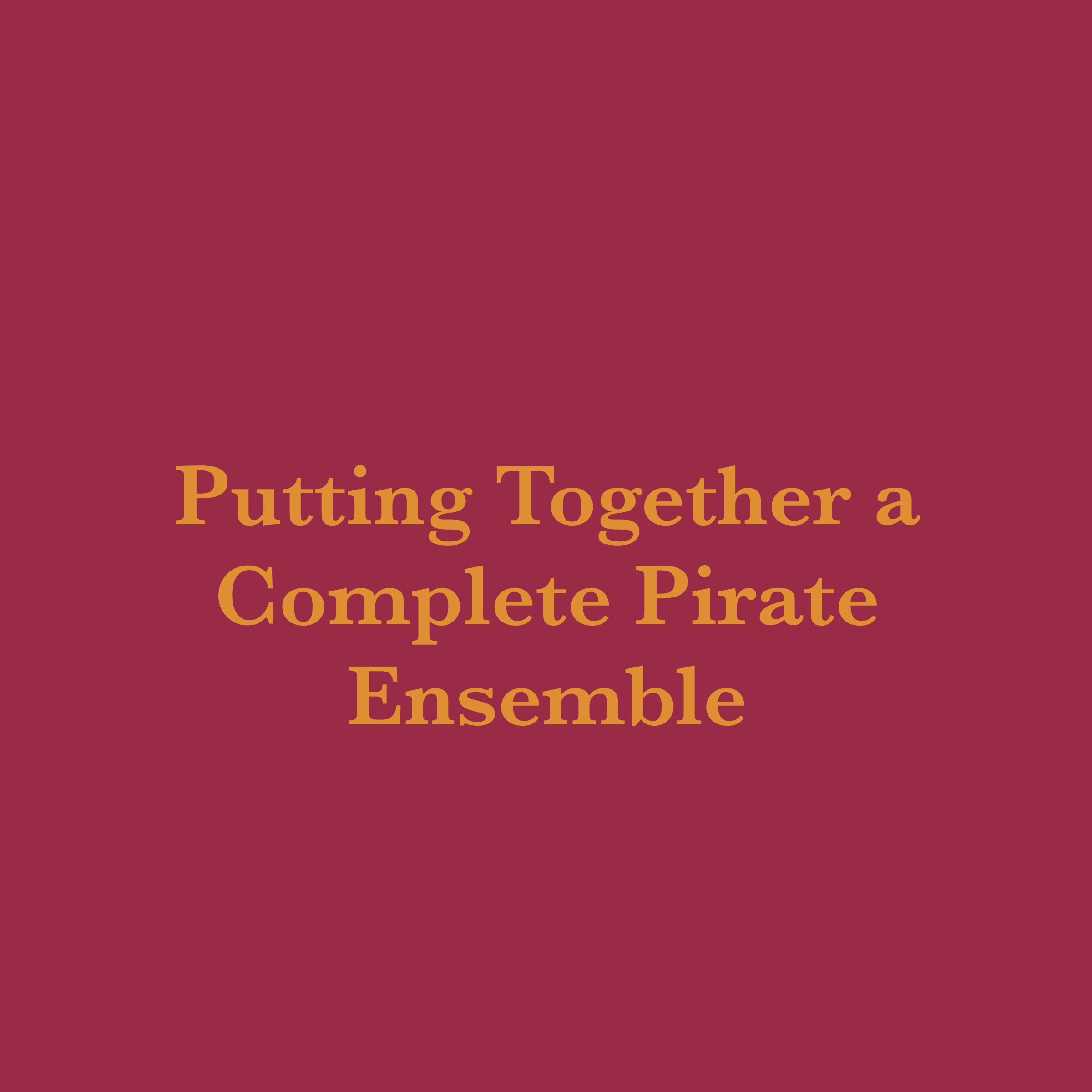
Now that you know the basics of a pirate outfit, it's time to put it all together. You'll want to stand out at pirate-themed events or costume parties. The secret is to mix different elements to create a look that's uniquely yours.
Mixing and Matching Pirate Elements for a Unique Look
Don't be shy when mixing different pirate pieces. Start with a striped shirt or blouse and black pants or a skirt. Add a bandana, eye patch, and pirate hat for the full effect. For a casual vibe, try a pirate-themed t-shirt with jeans and boots.
For a more detailed pirate look, layer your clothes. Begin with a basic shirt and pants, then add a vest, coat, or jacket. Don't forget a sash, belt, and jewelry to complete the look. At a Renaissance faire or Disney Cruise Line's Pirate Night, go for a full pirate costume.
The fun of pirate outfits is in mixing and matching. Try different textures, colors, and patterns to show off your style. With a bit of creativity and the right accessories, you're ready for your next pirate adventure!

Confidence is key when wearing a pirate costume. Stand tall, use your best pirate accent, and dive into character. With confidence, you'll be the most daring pirate at any event.
When looking for your pirate outfit, you'll find many options. There are 226 products in the Costumes & Accessories category. Adult costumes make up 168 of these, with 110 for men and 98 for women. You'll also find kid's costumes, accessories, and specific items like Men's Jack Sparrow Vest Costumes or Pirate Costume Wigs Hair.
Sellers in this category are known for their excellent service. They have average feedback scores of 4.9 for accurate descriptions, fair shipping costs, and good communication. They also get a perfect 5.0 for how fast they ship. Many accept different payment methods, including PayPal Credit. Returns are accepted, and prices vary from under $5 to over $100. With sales and discounts up to 75% off, you'll find the perfect pirate costume to wear with confidence.

